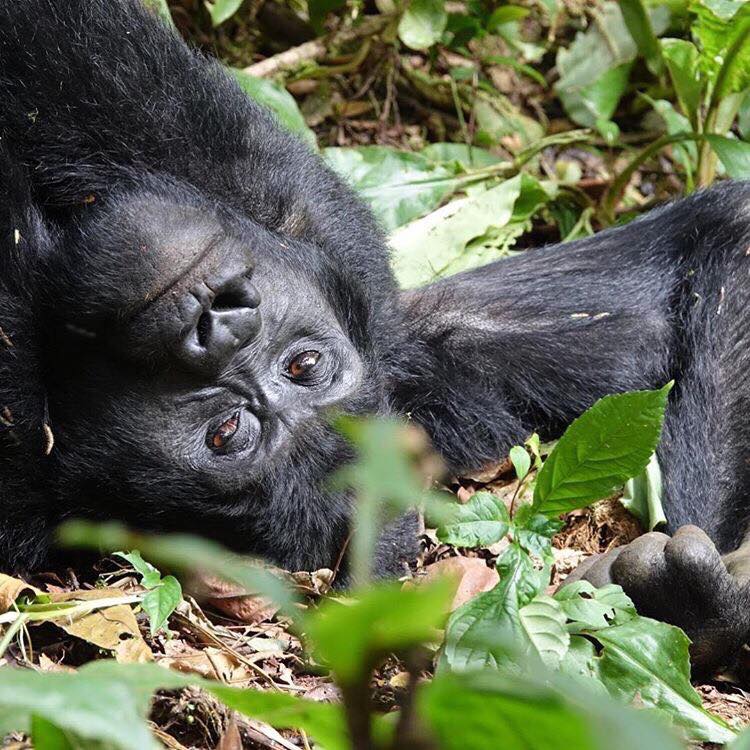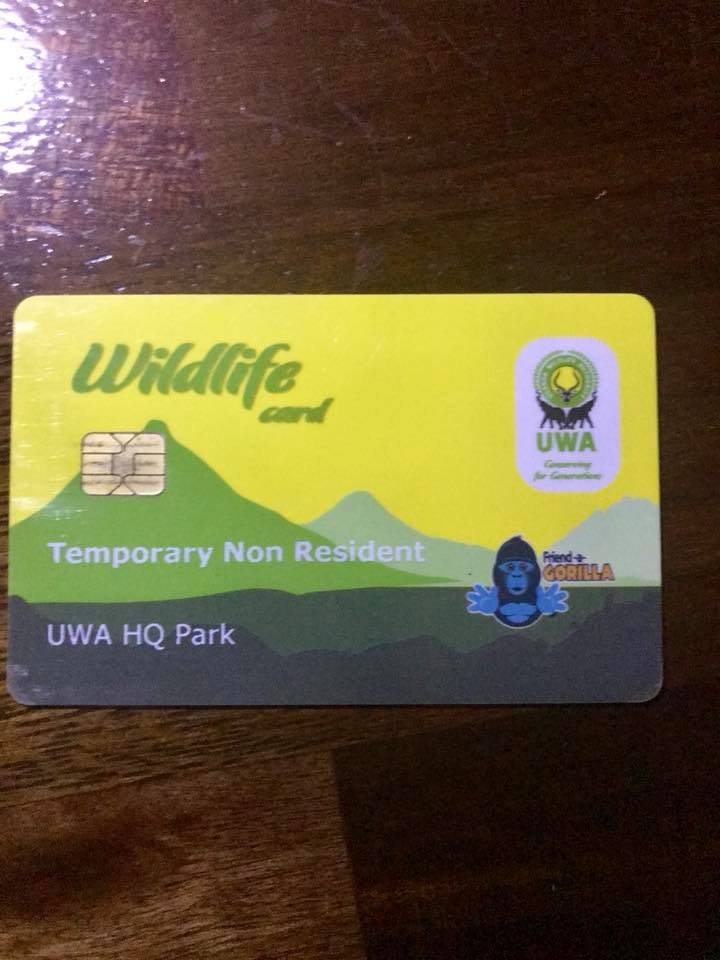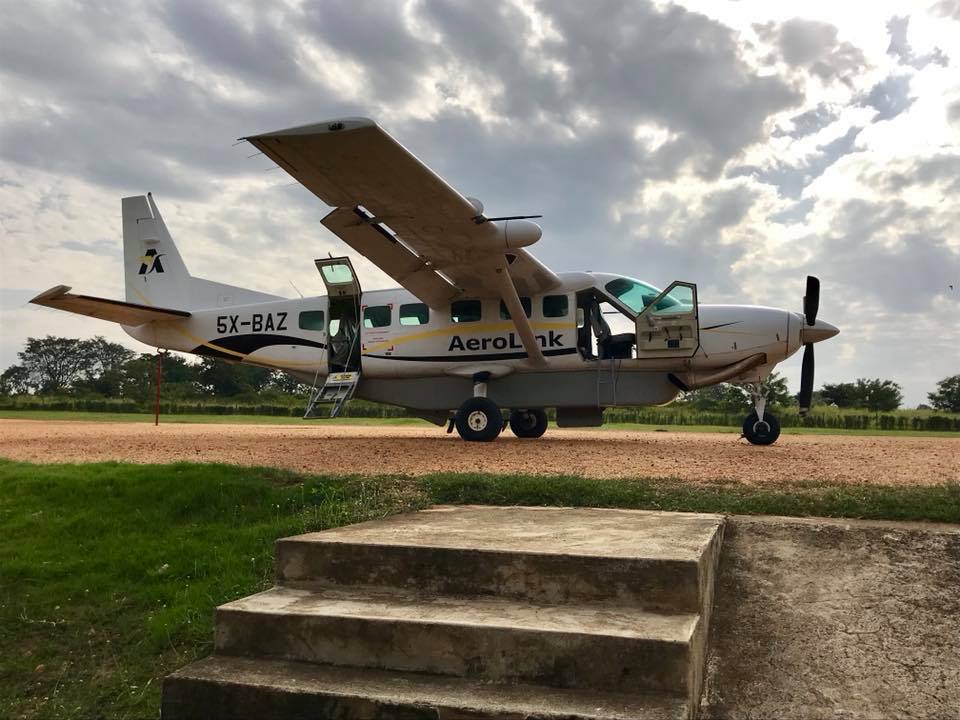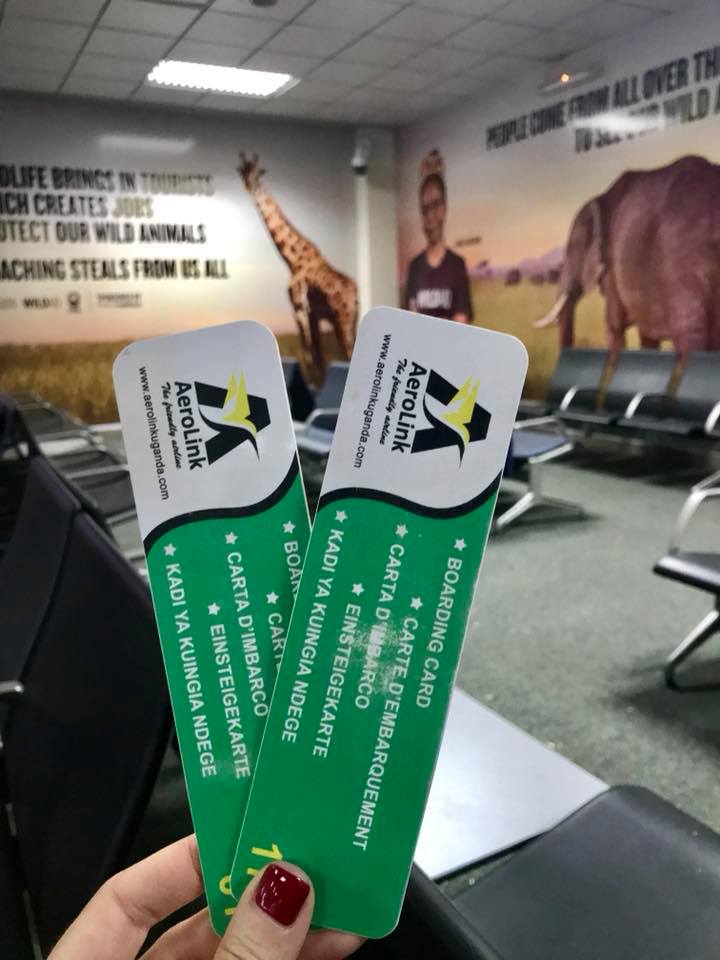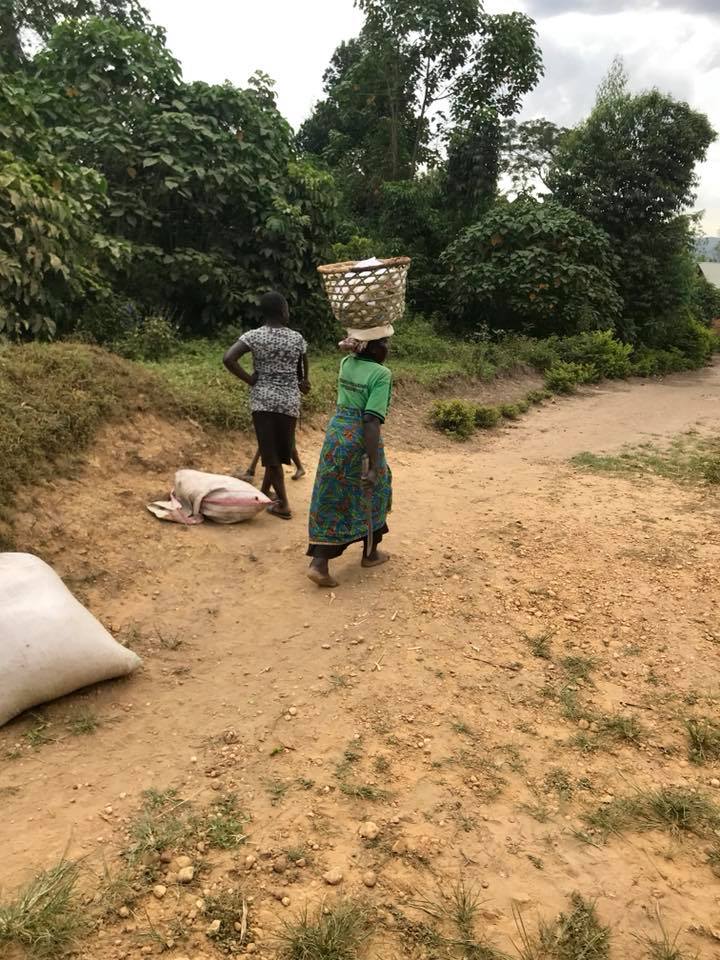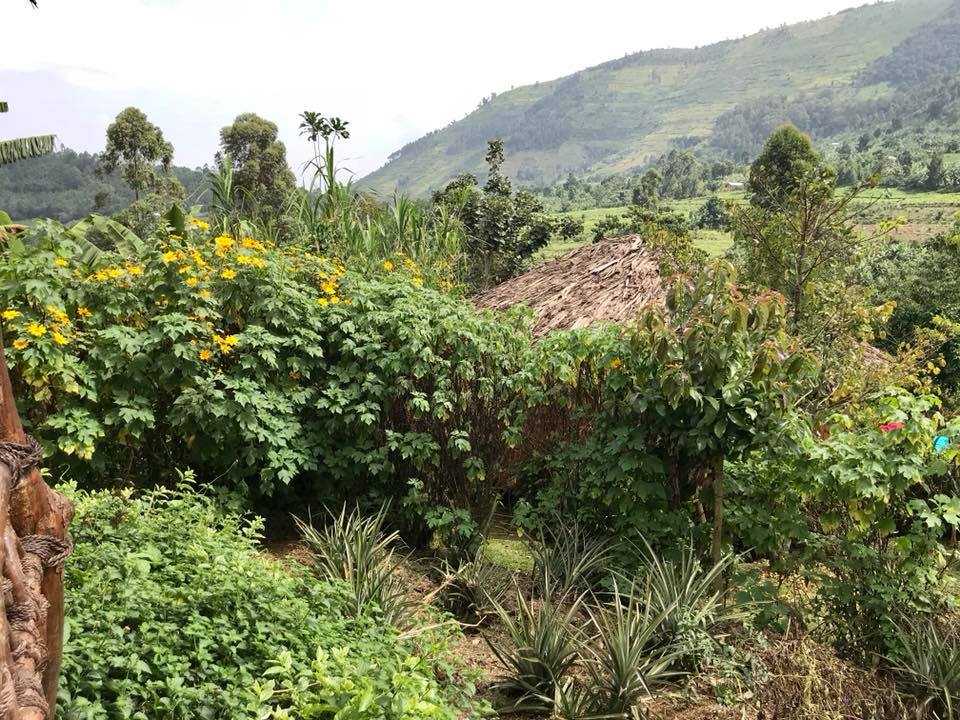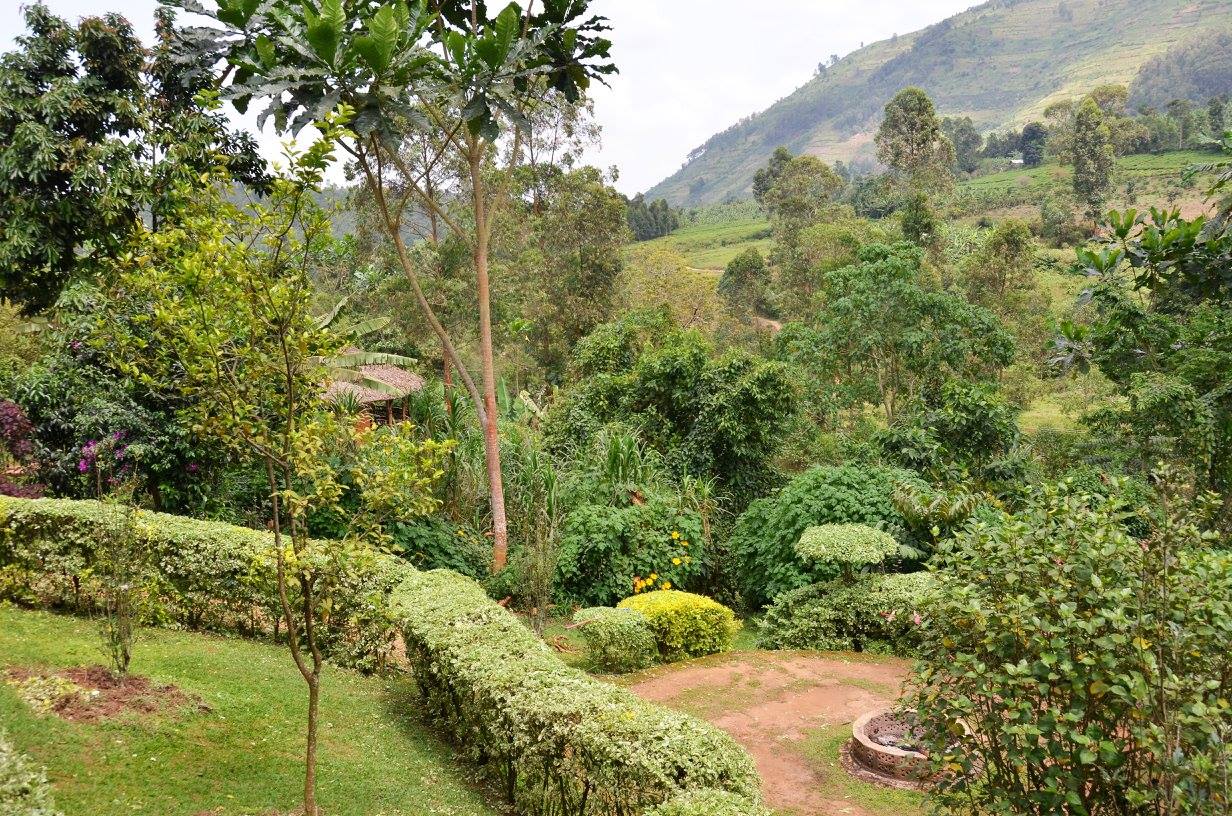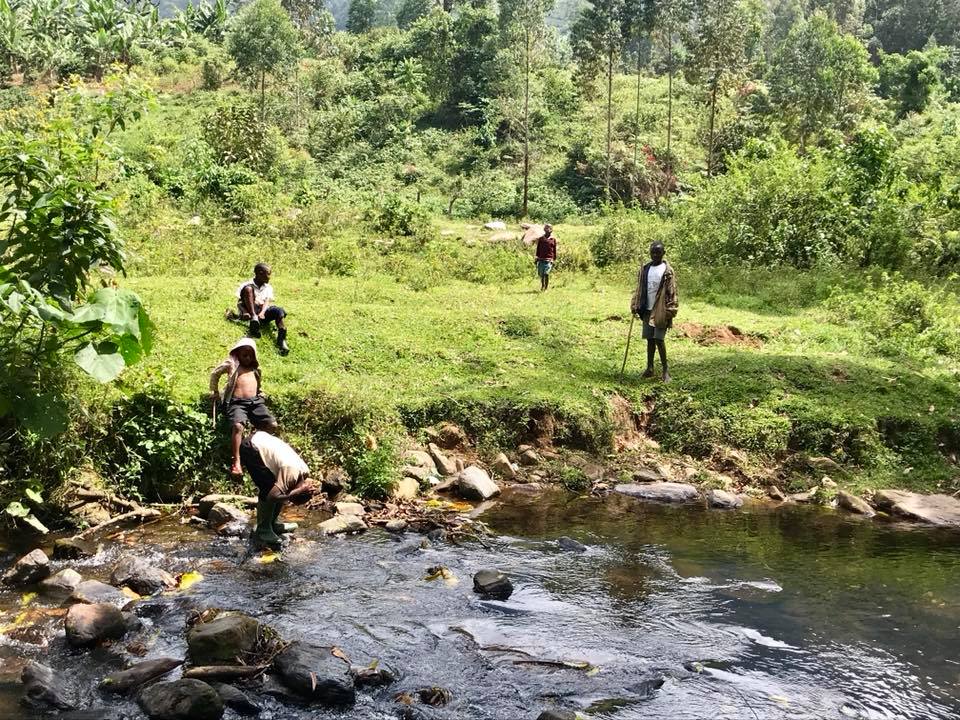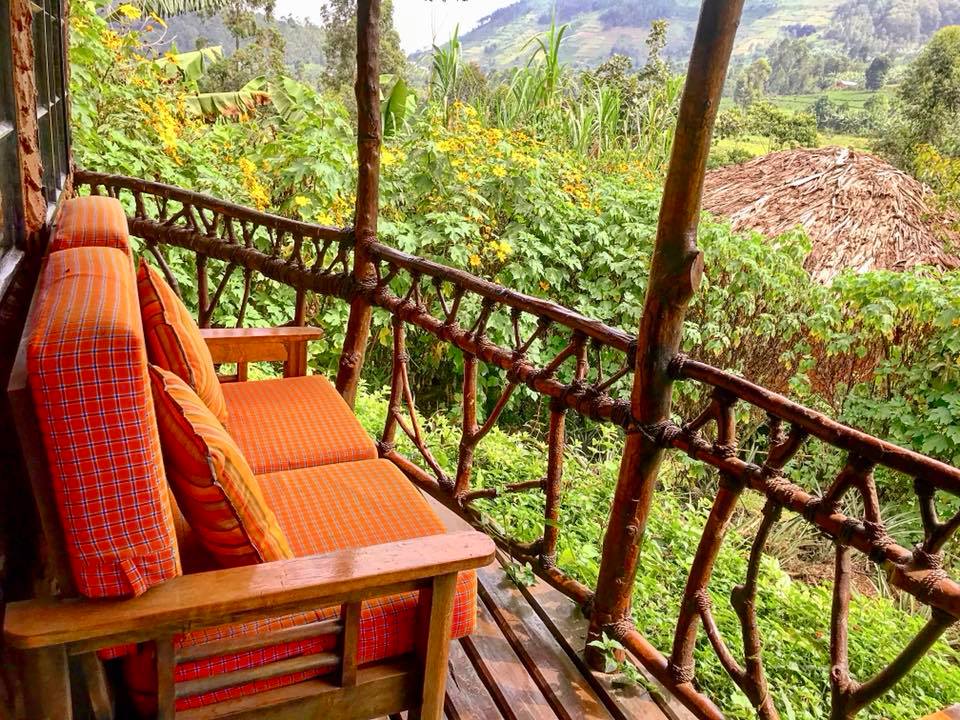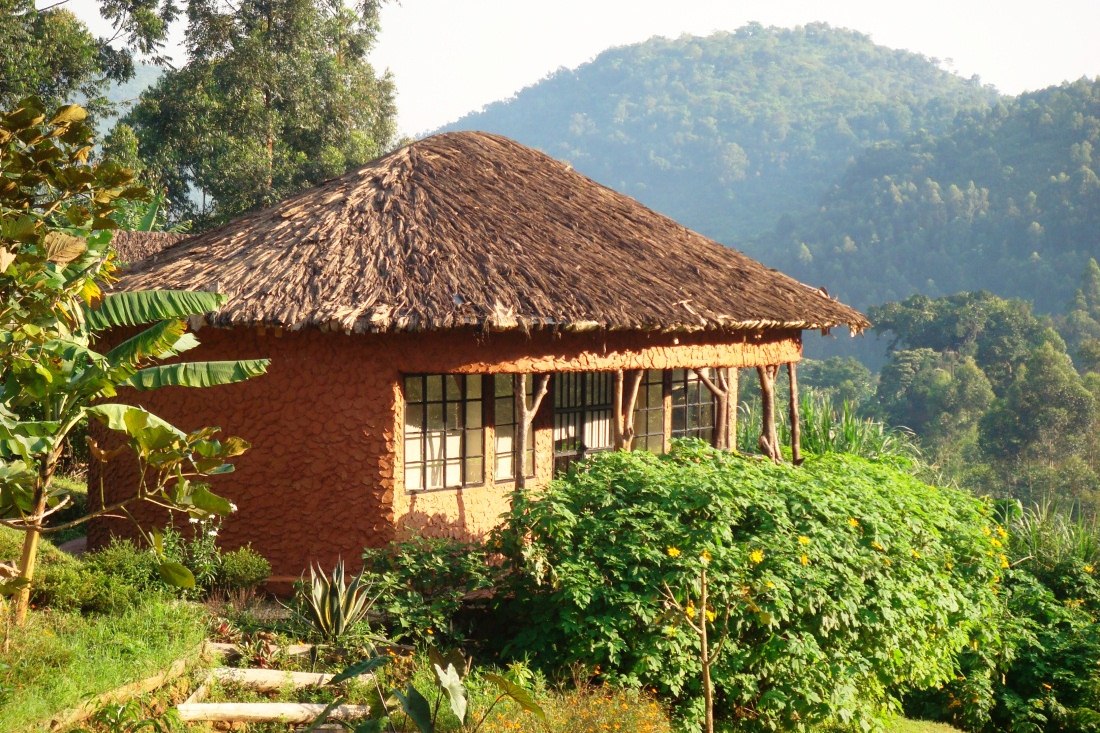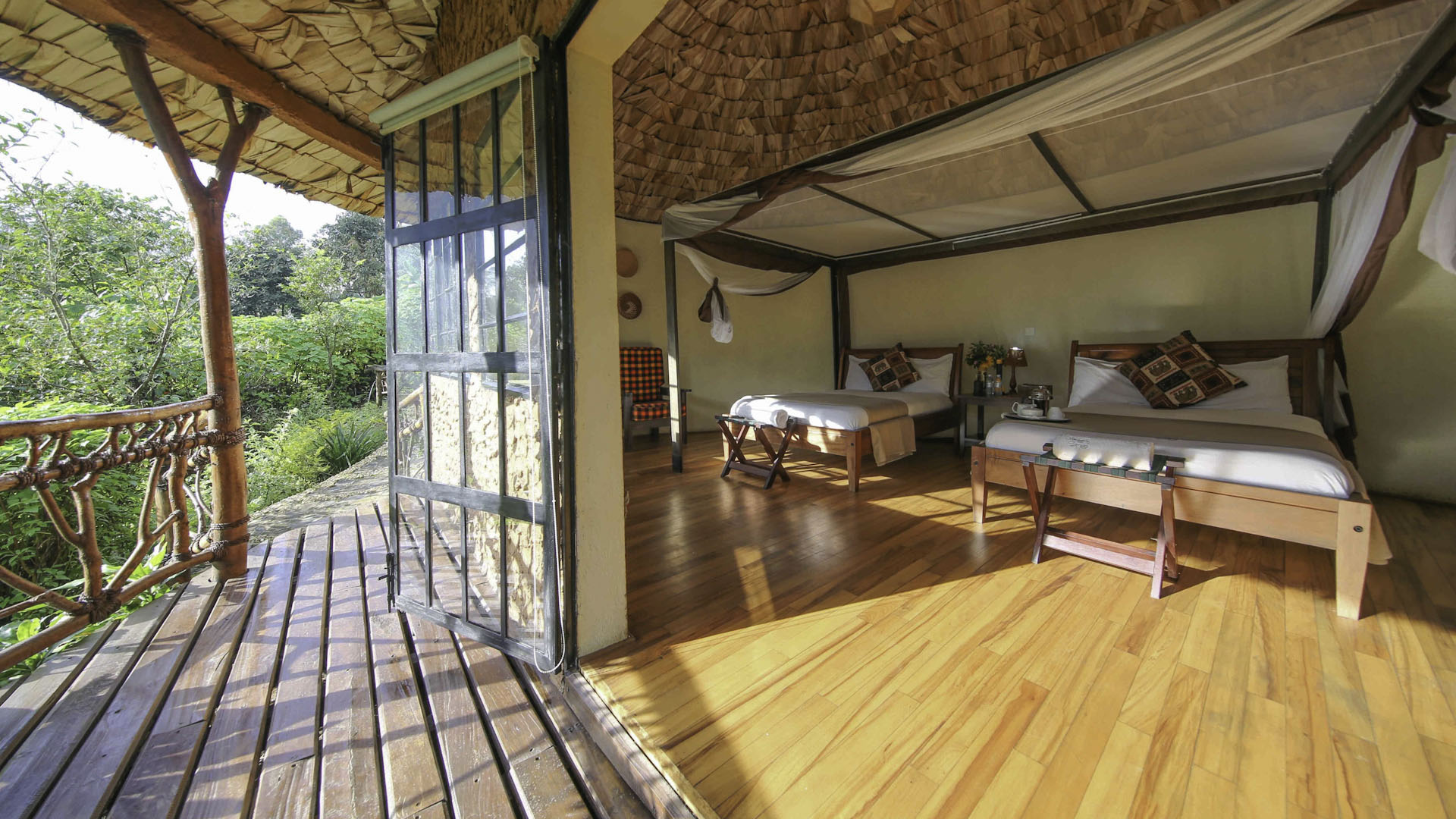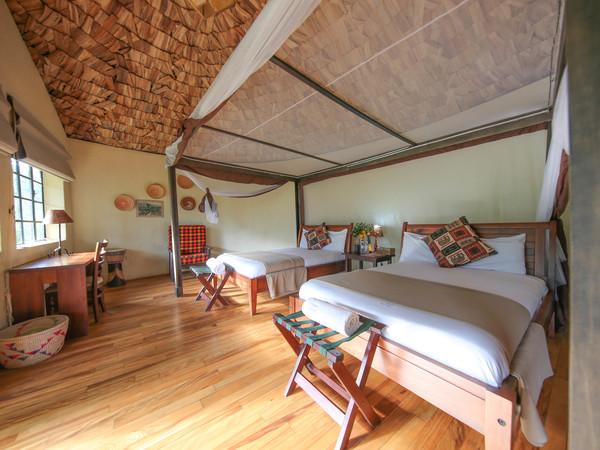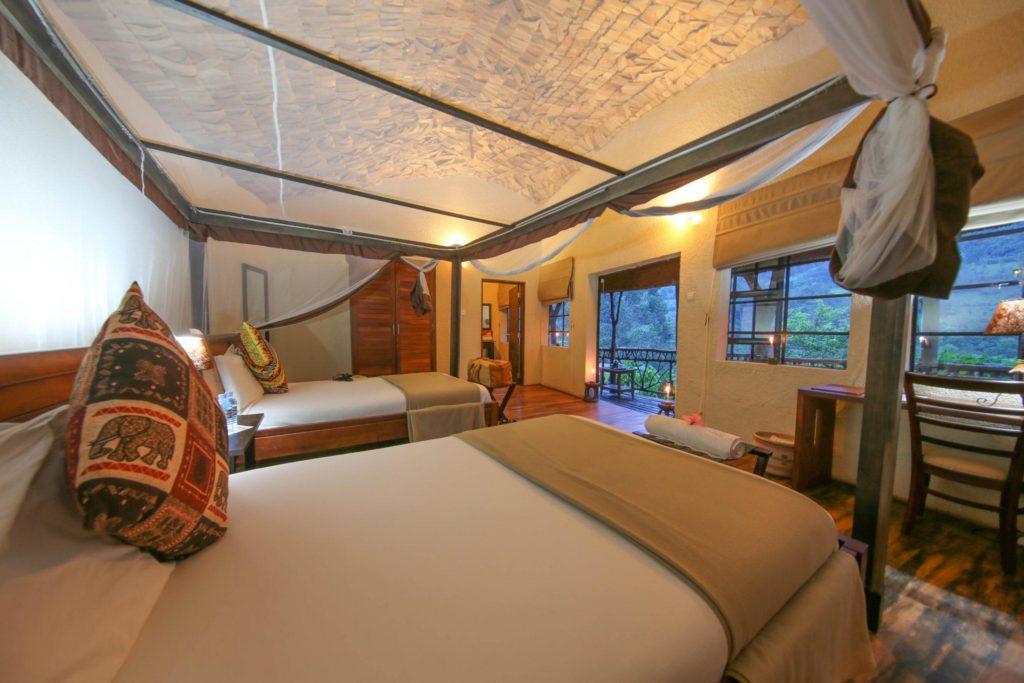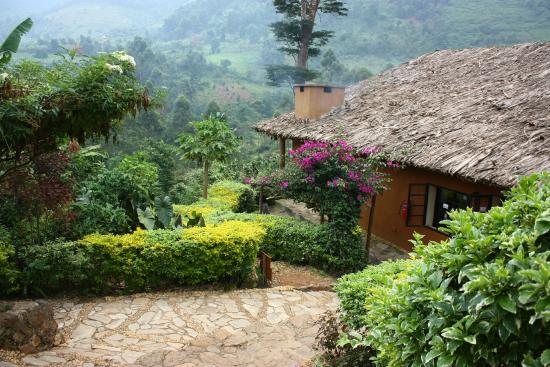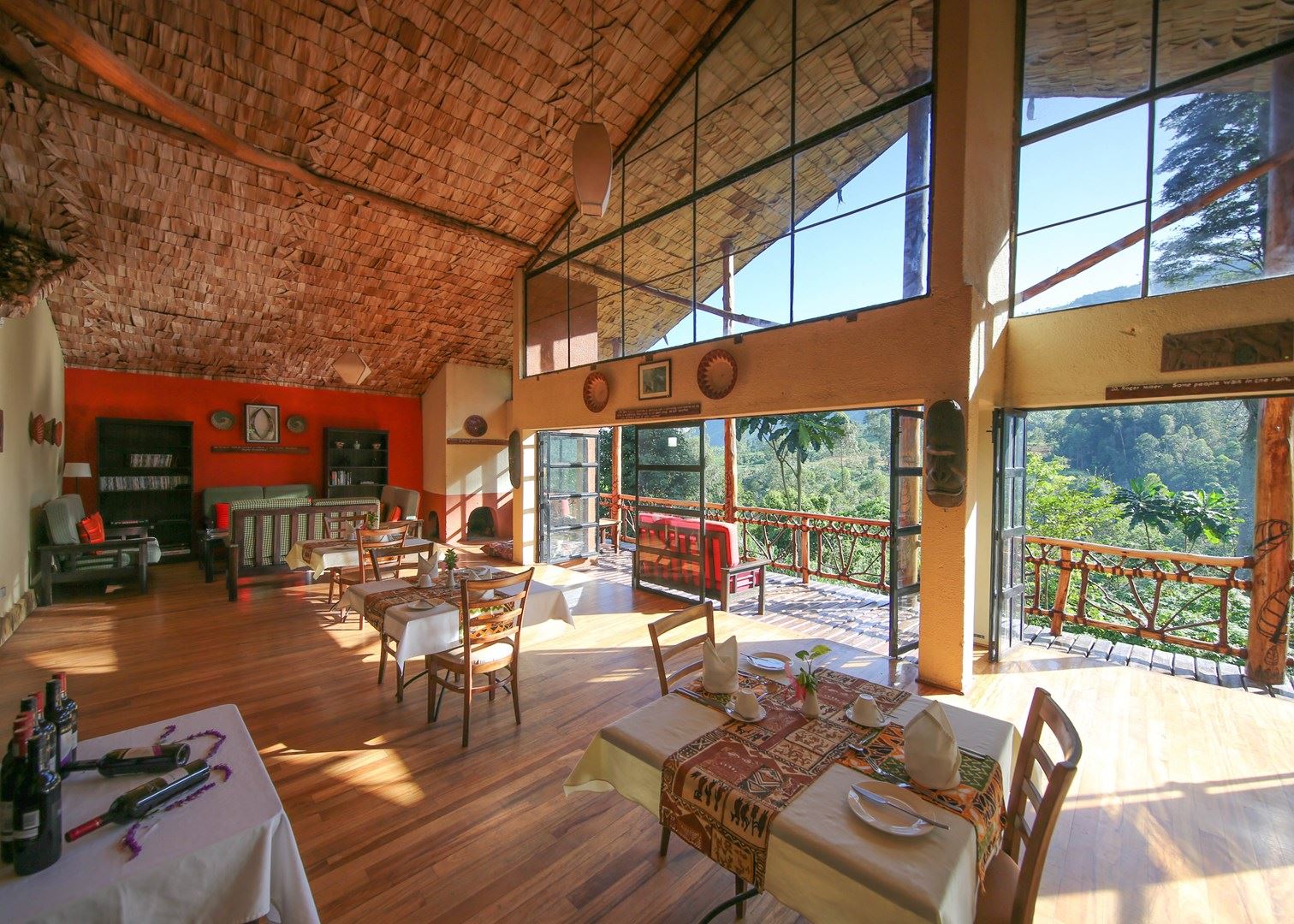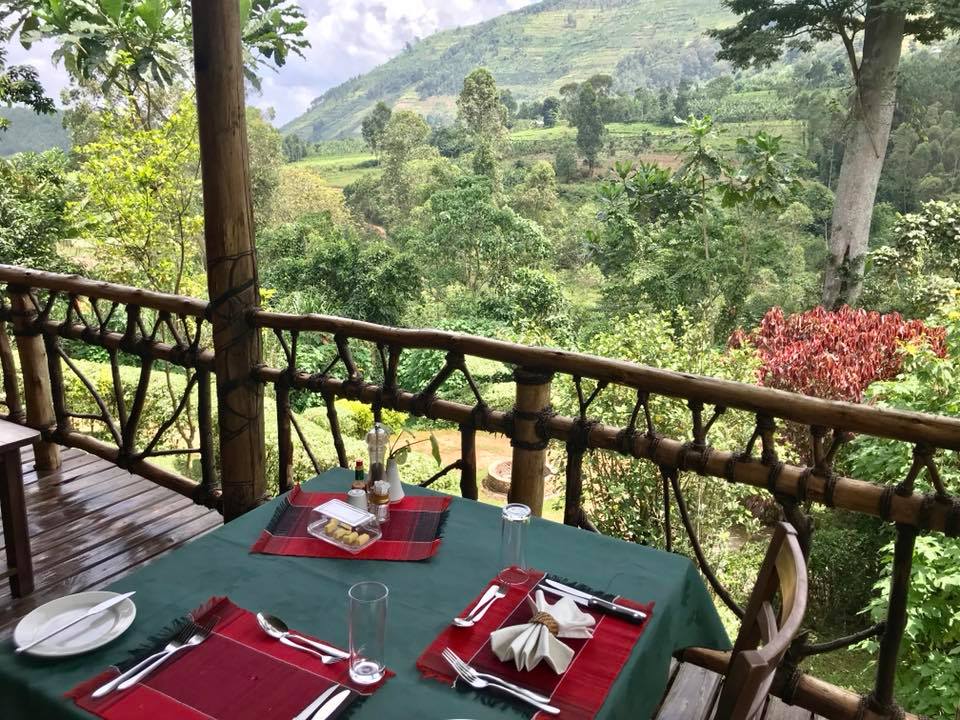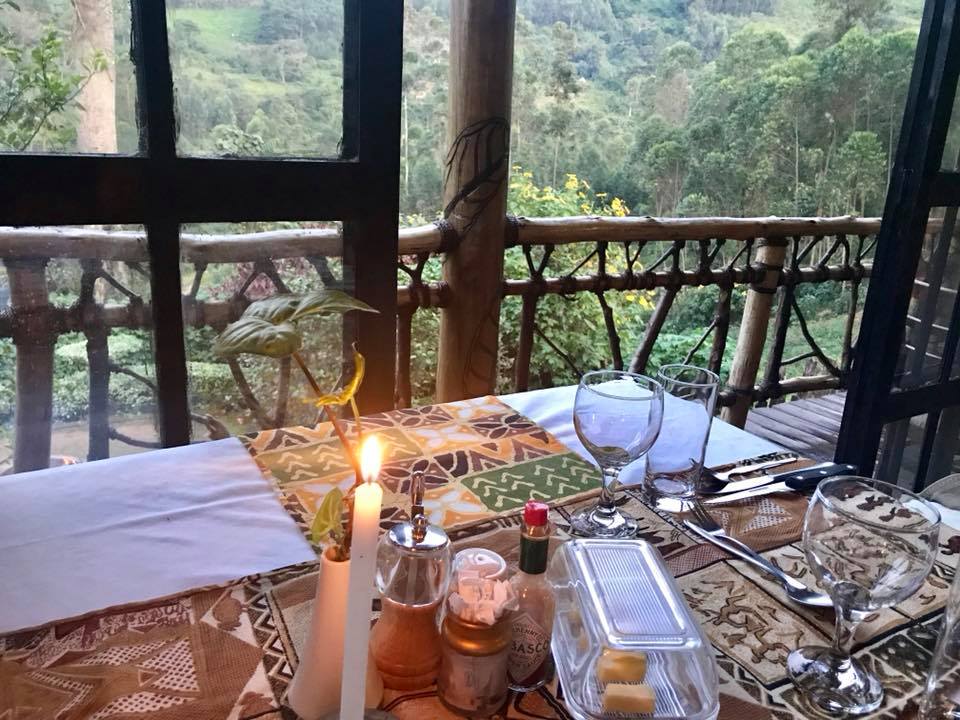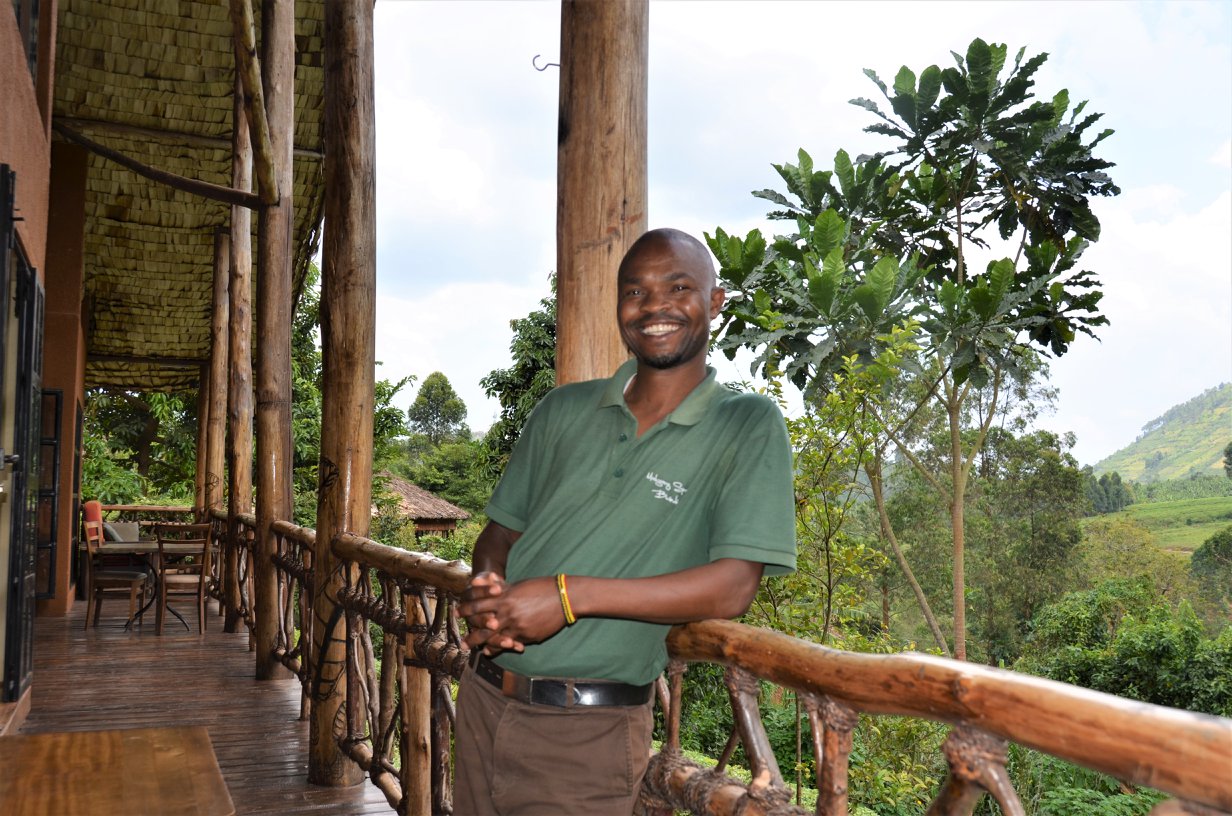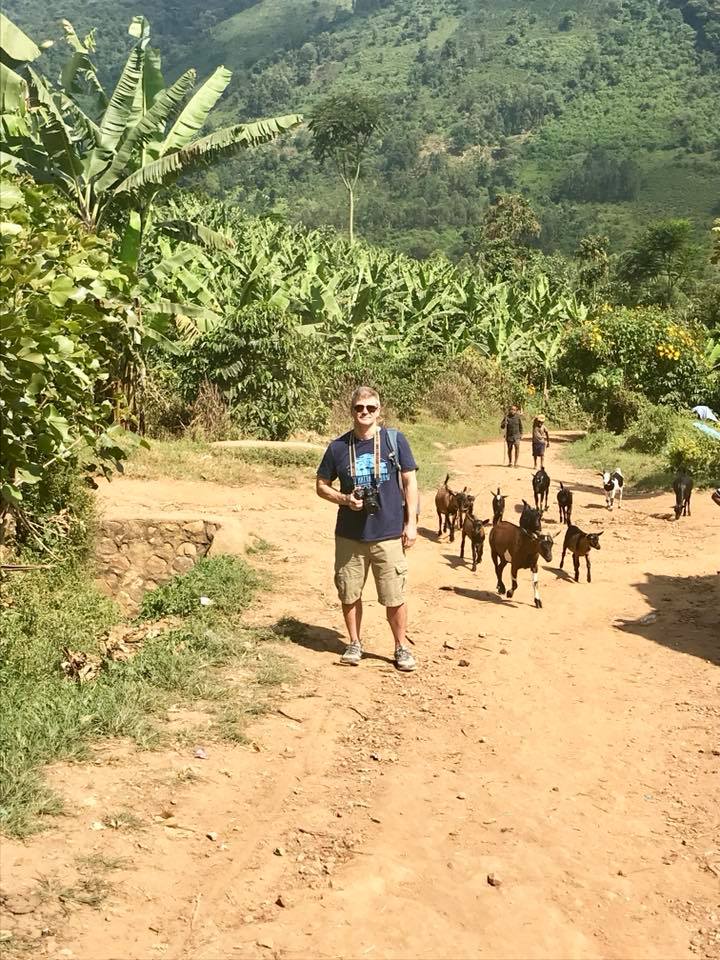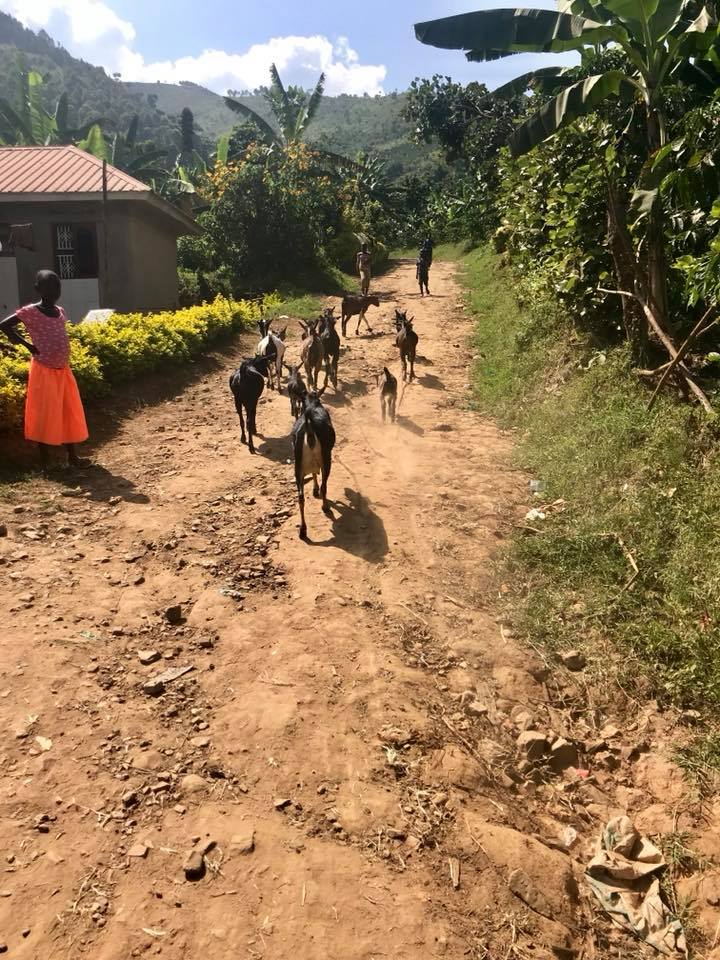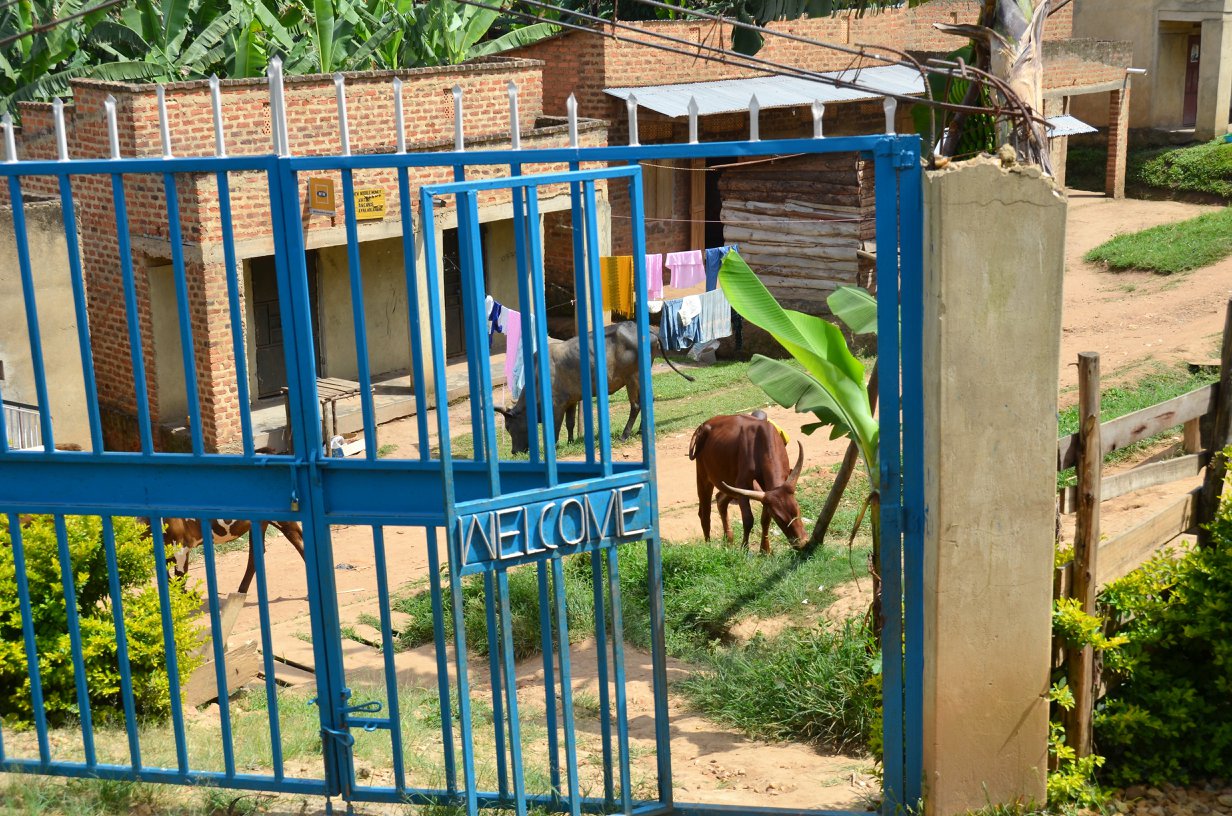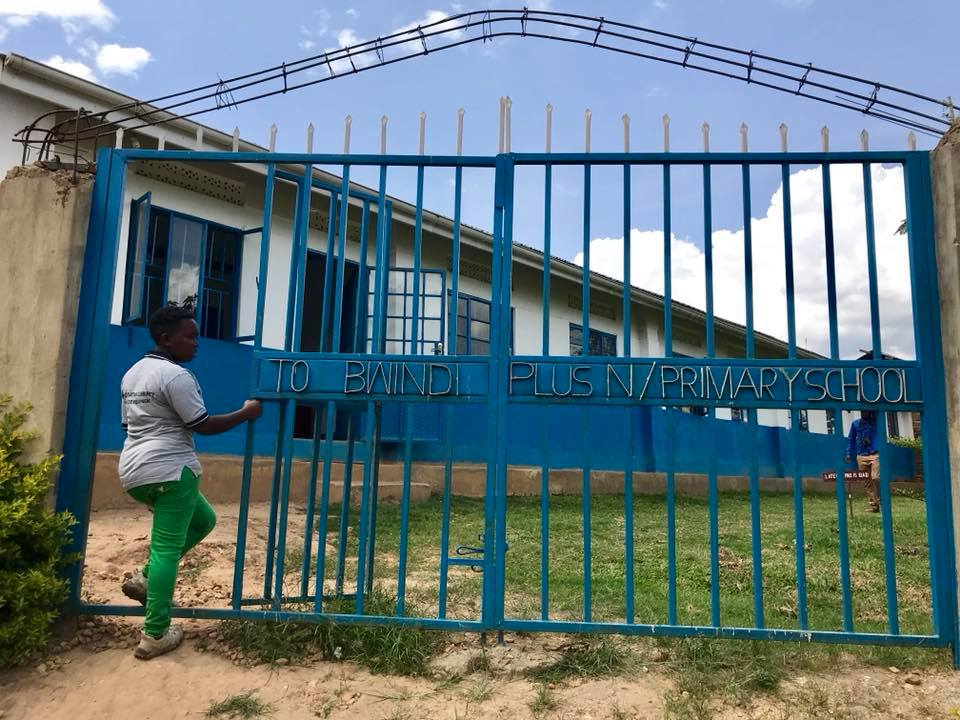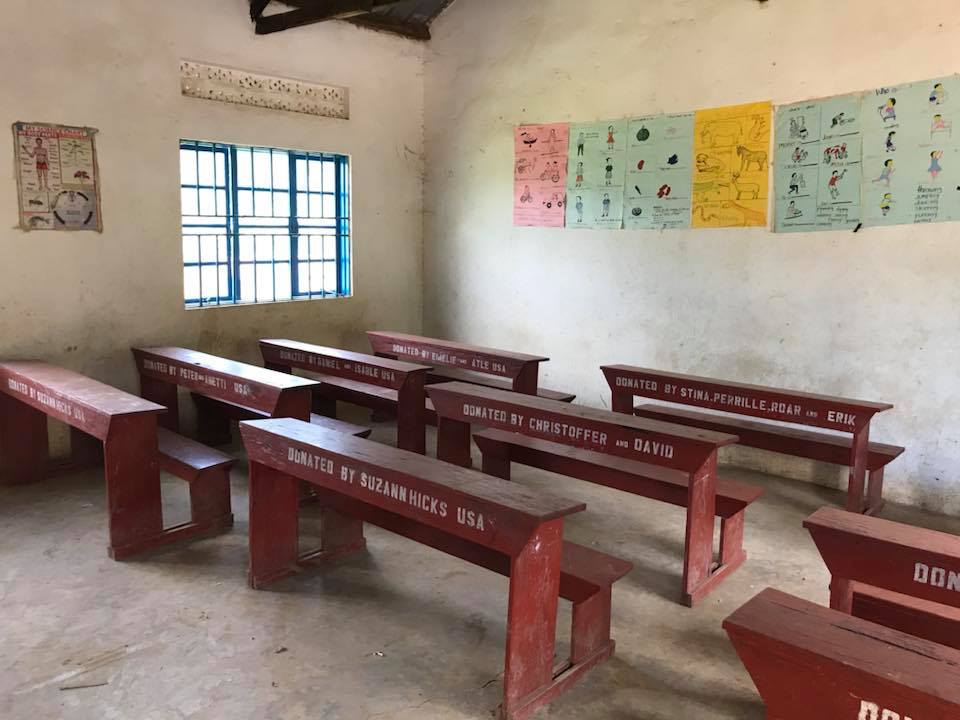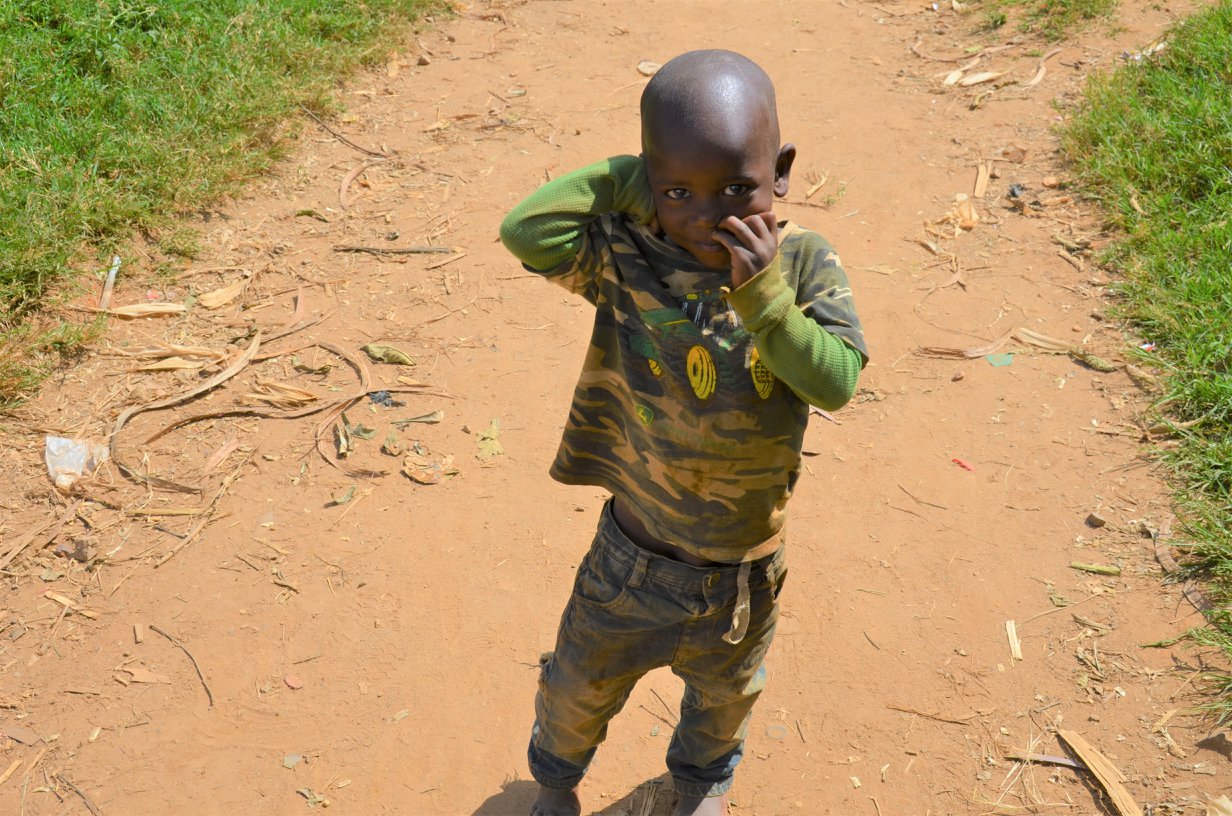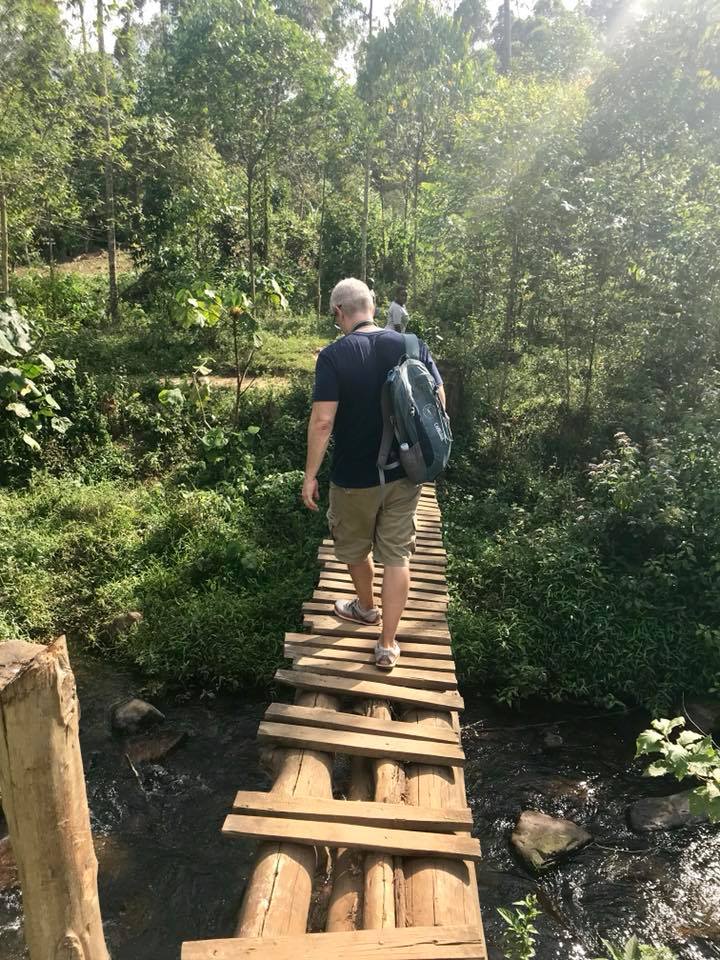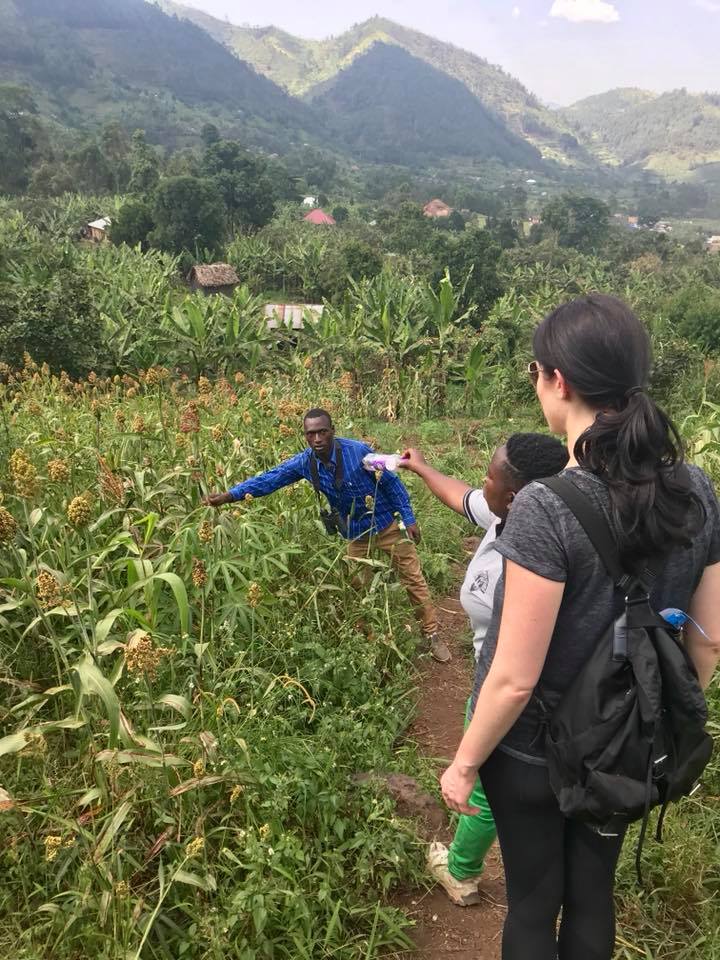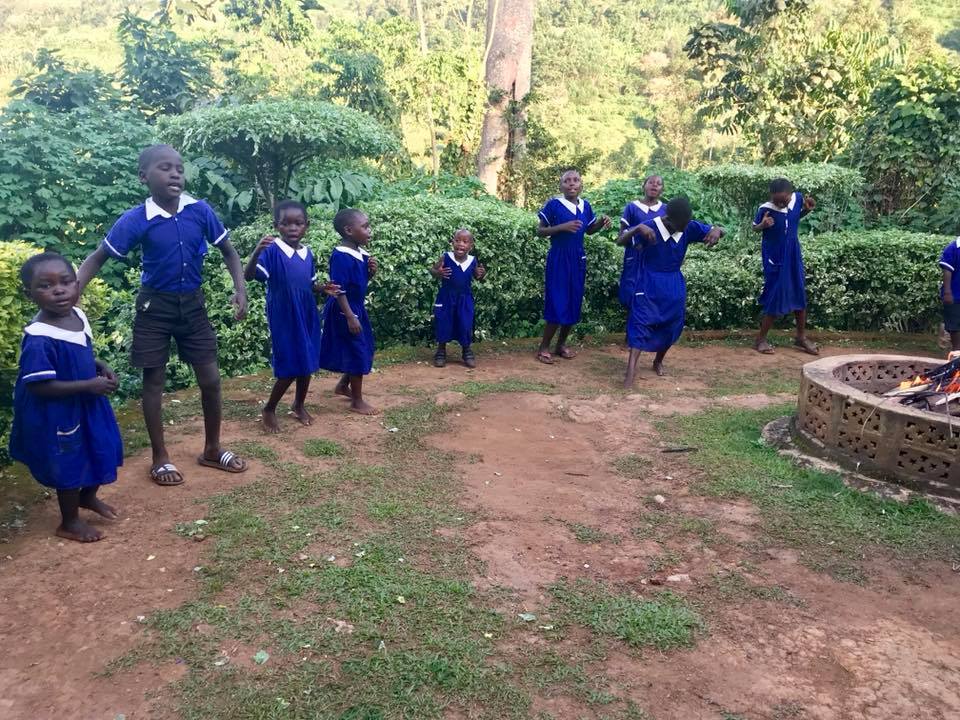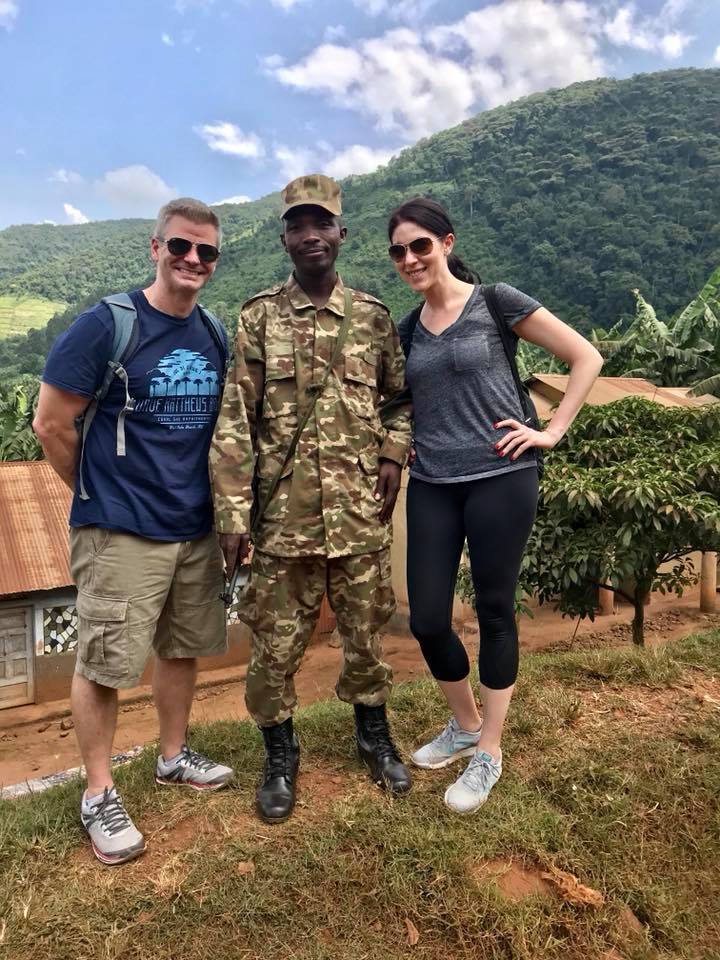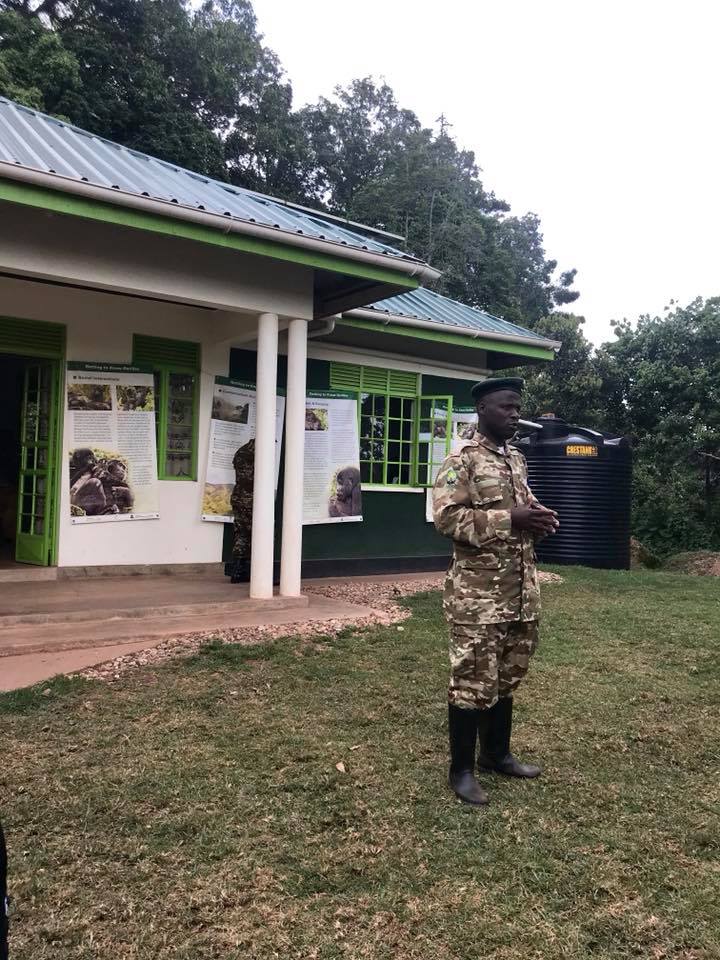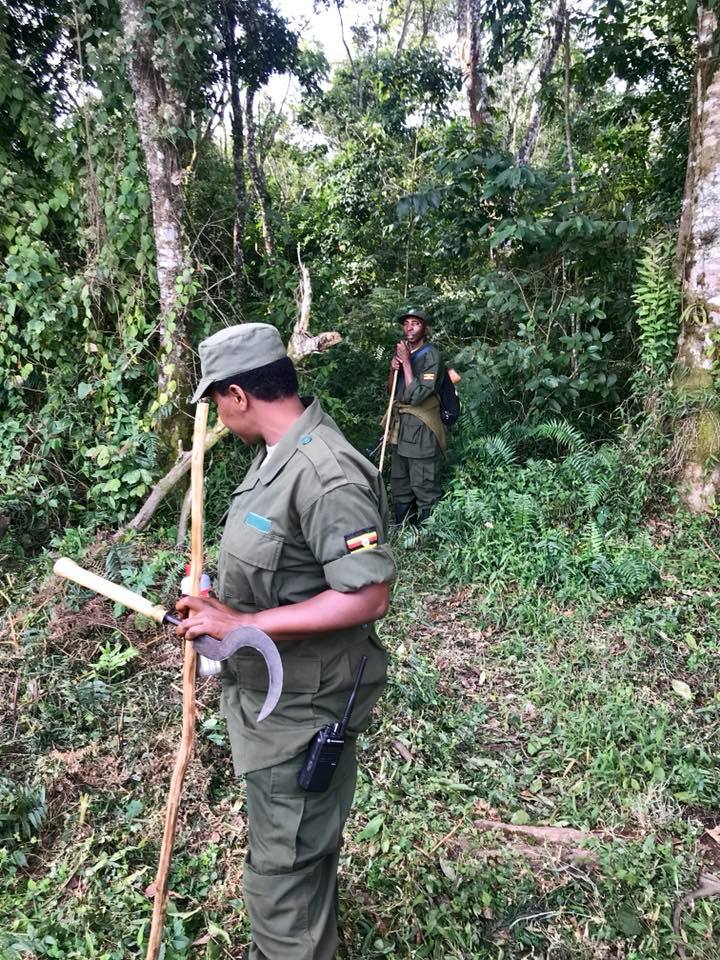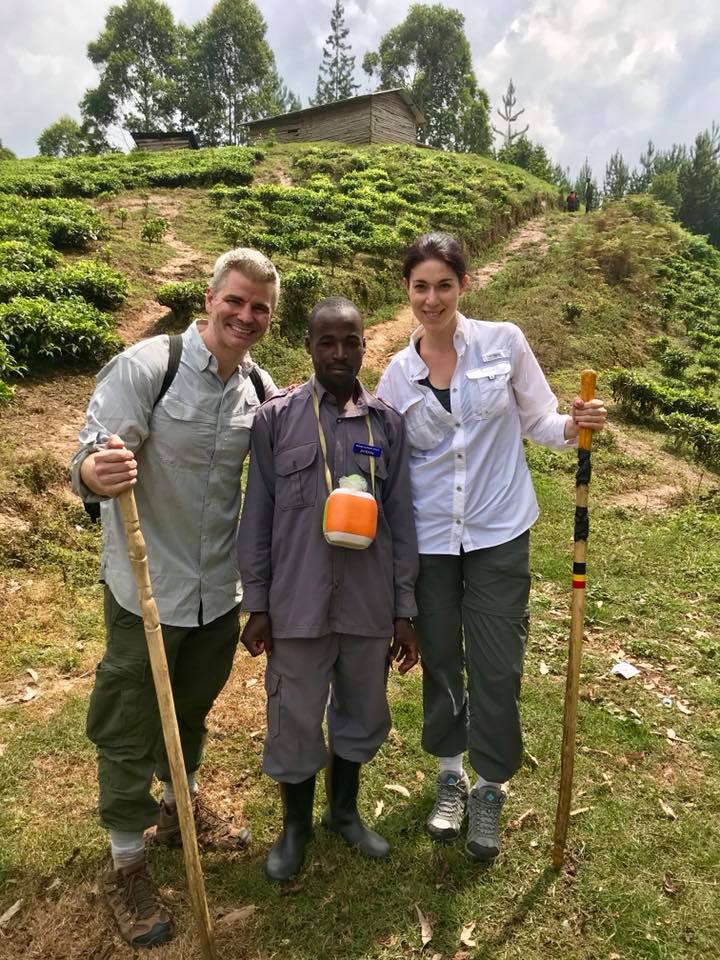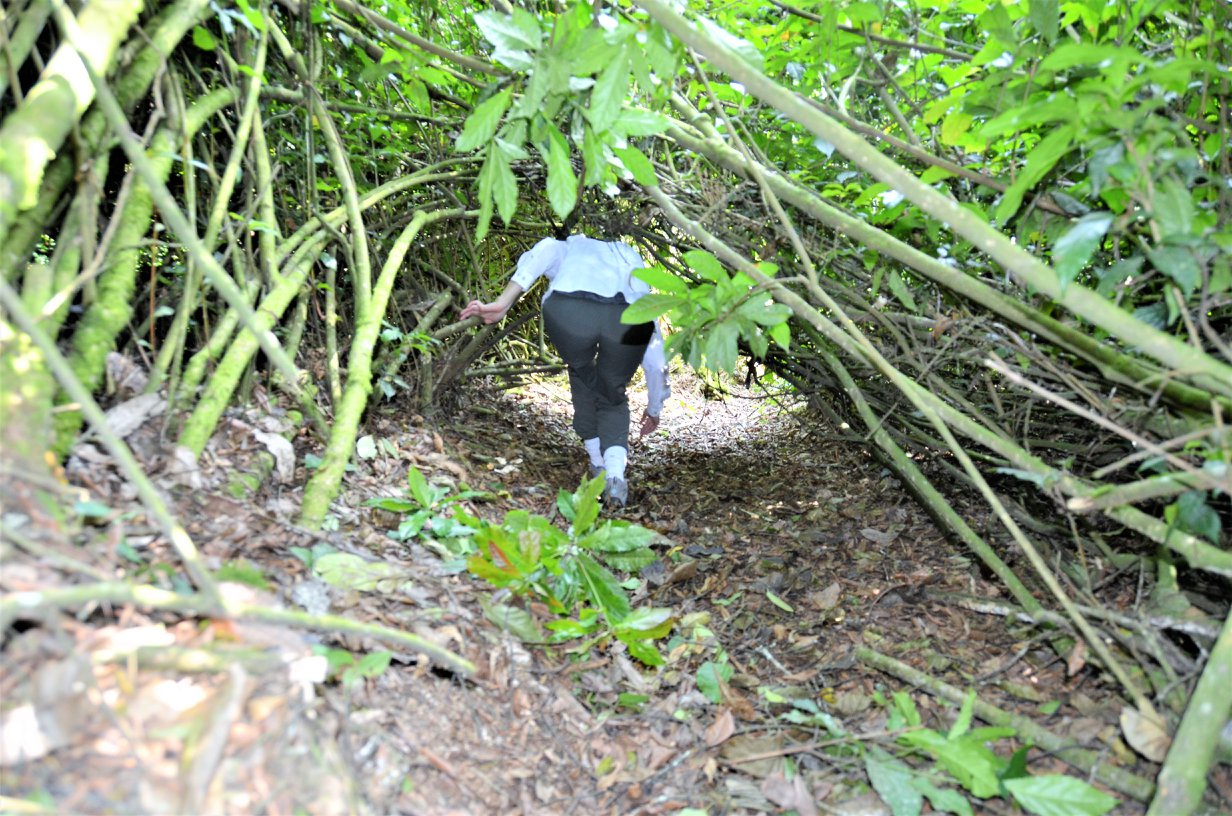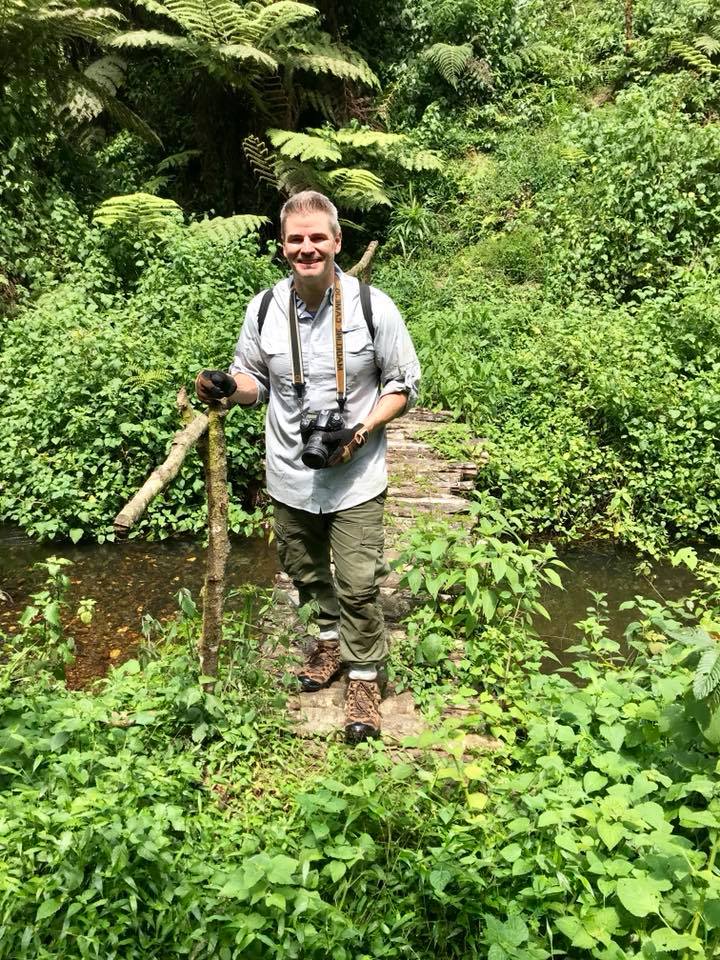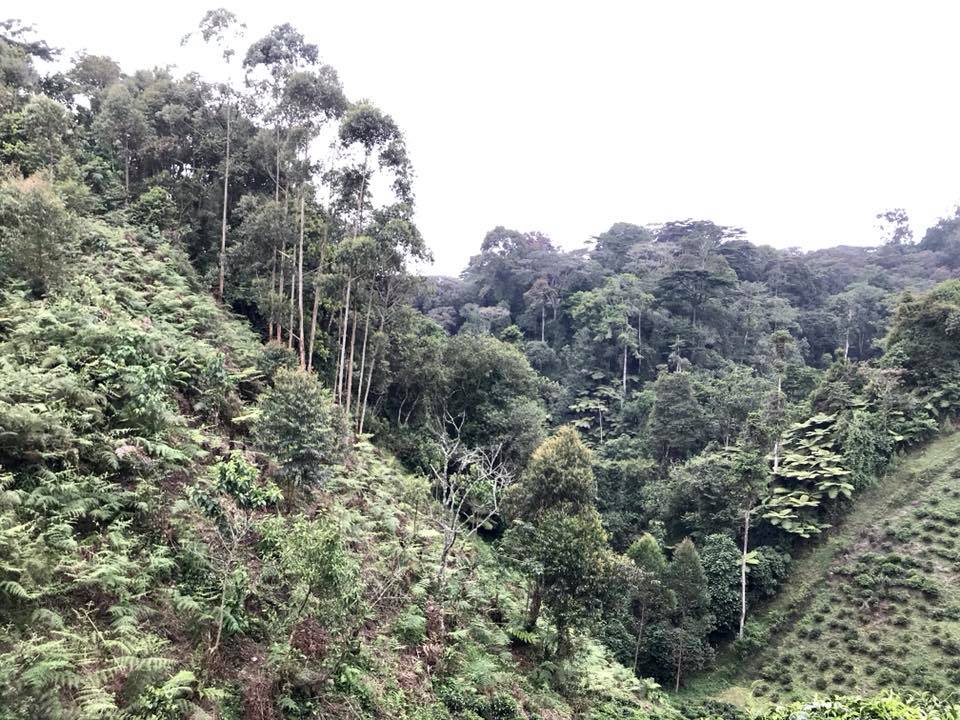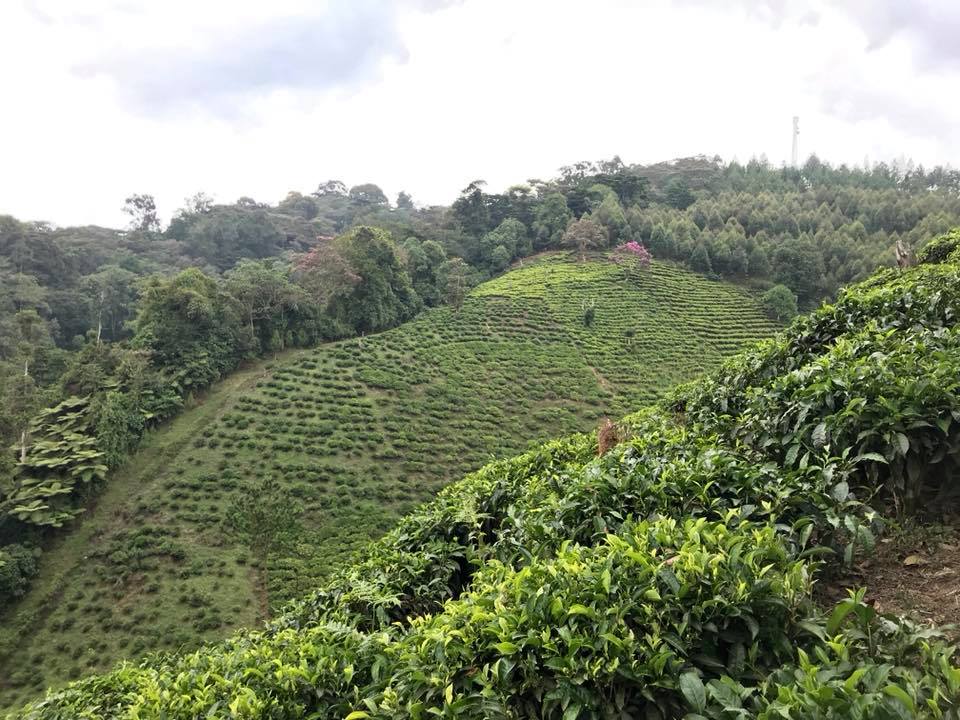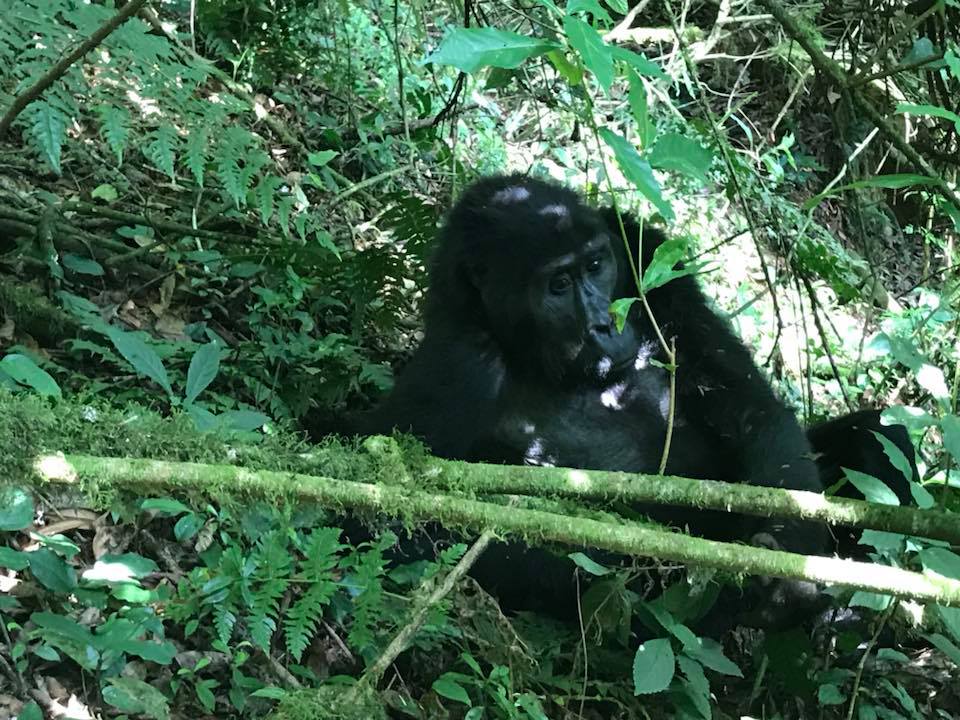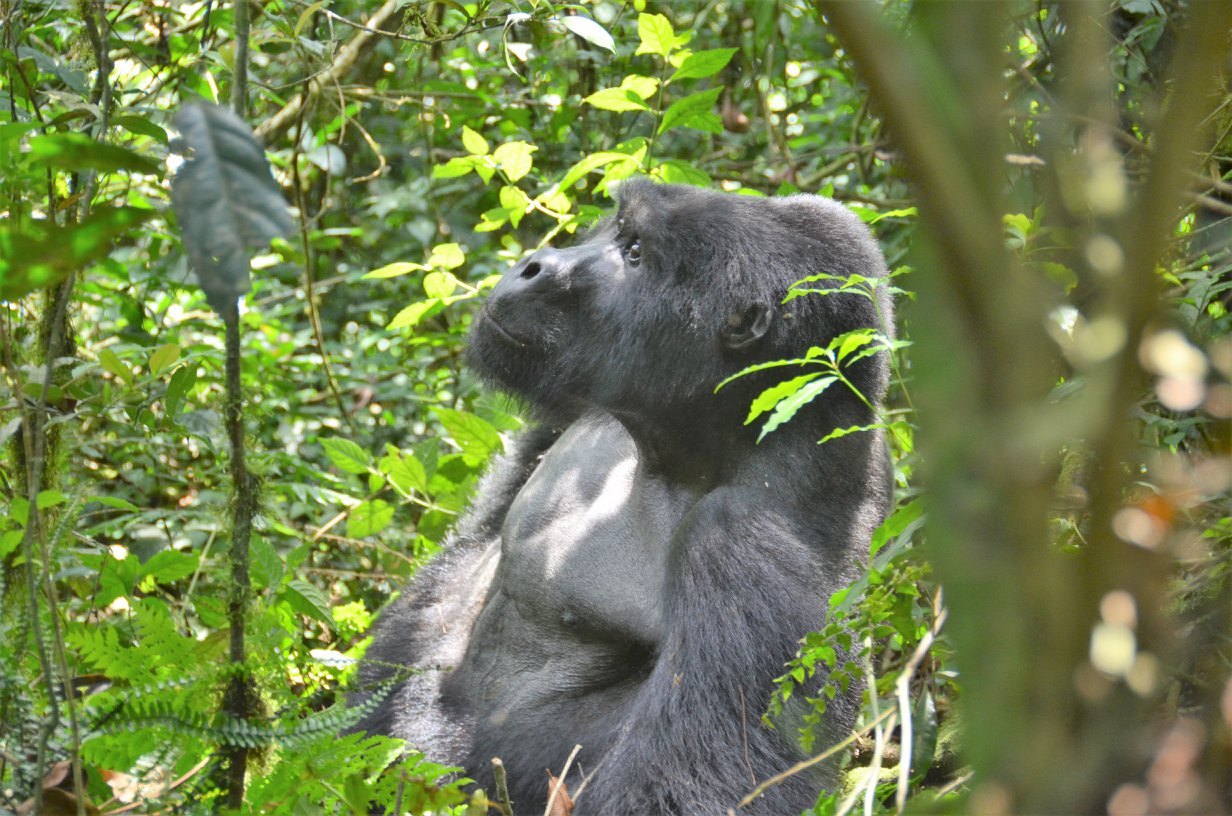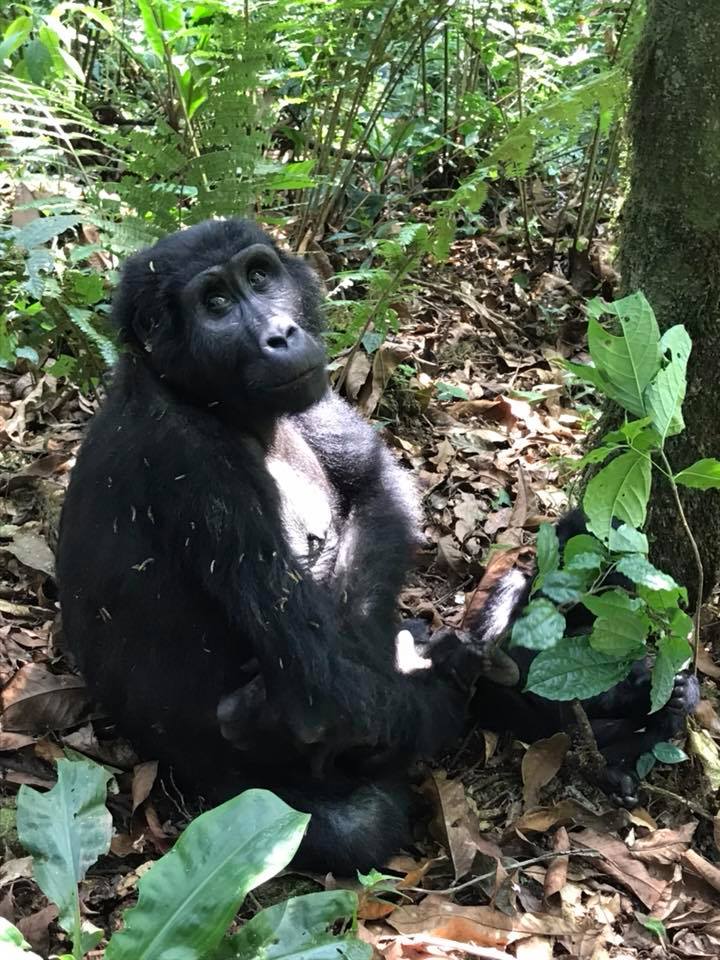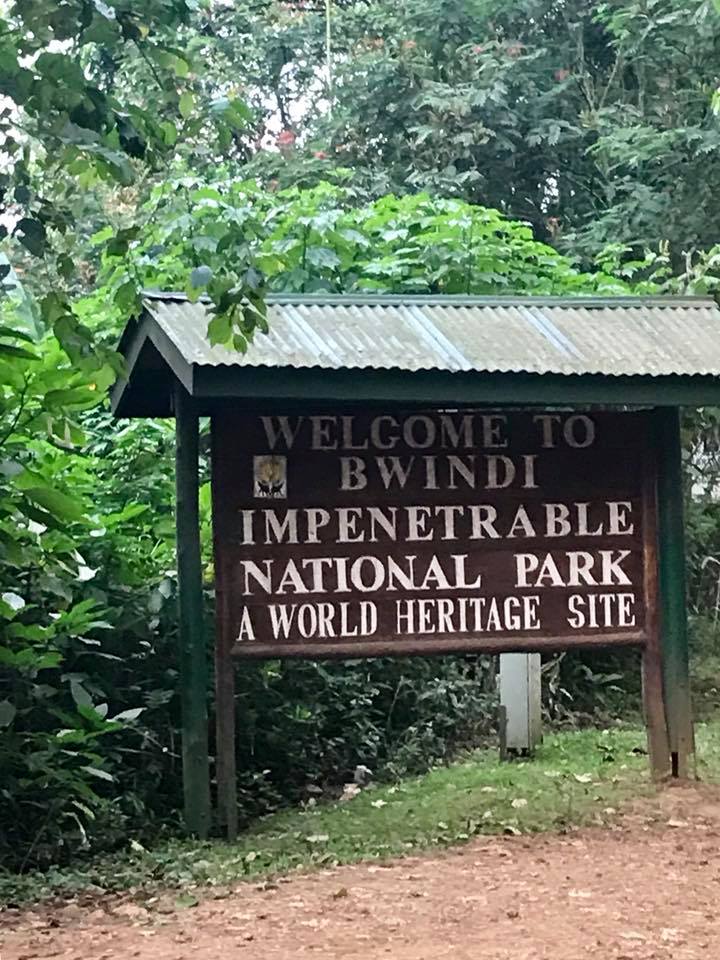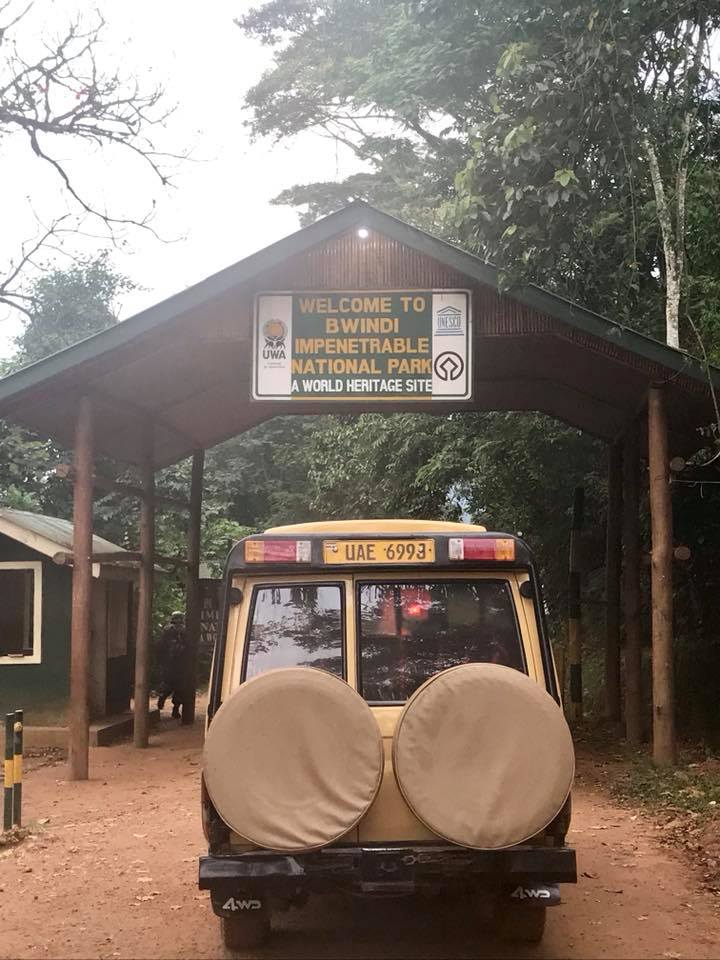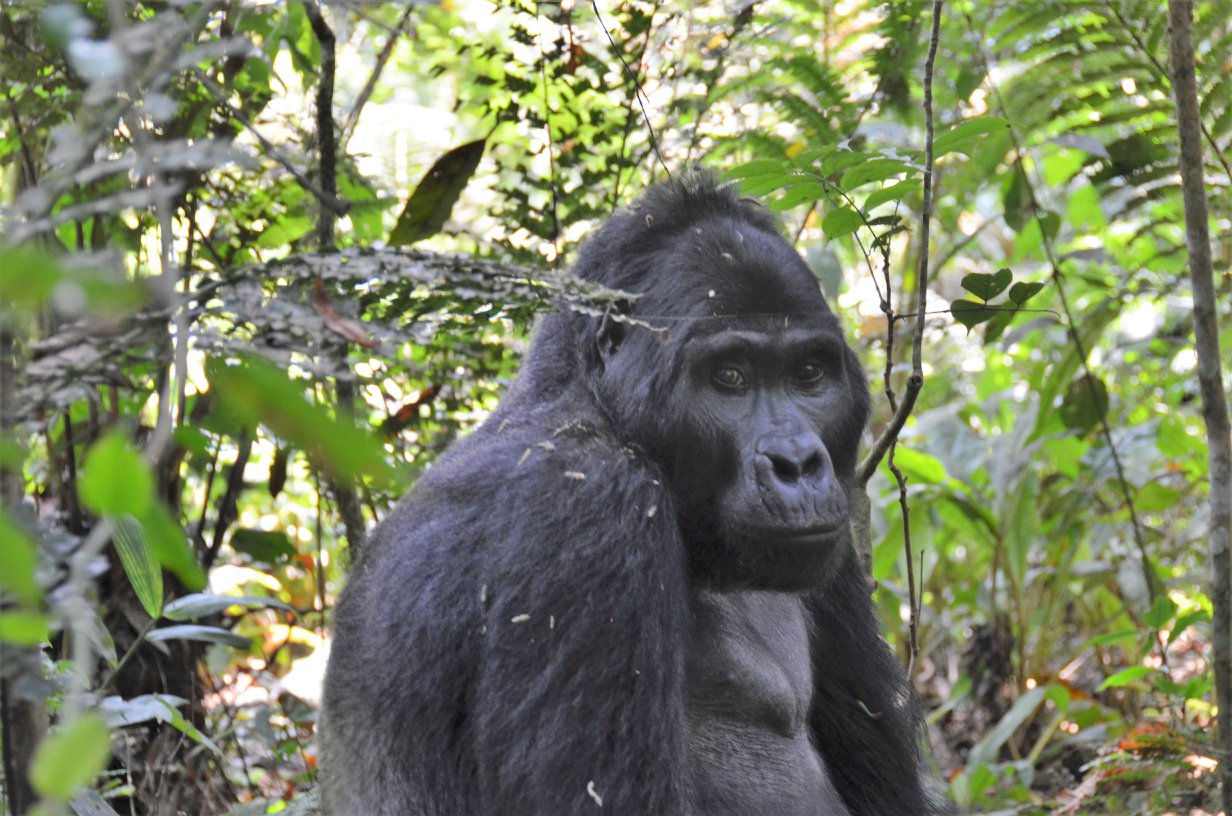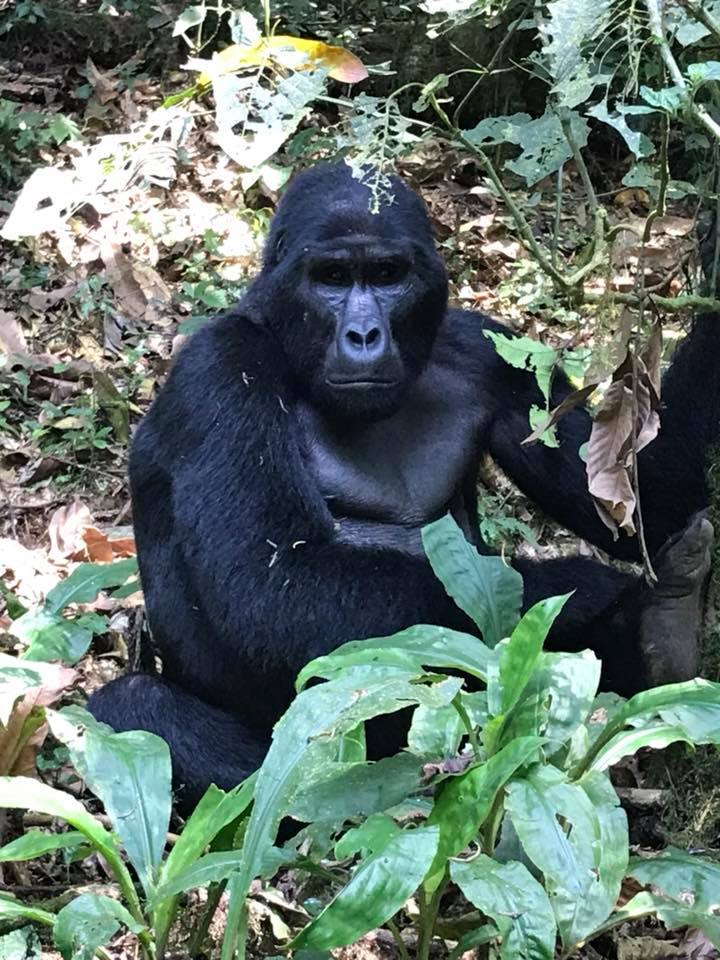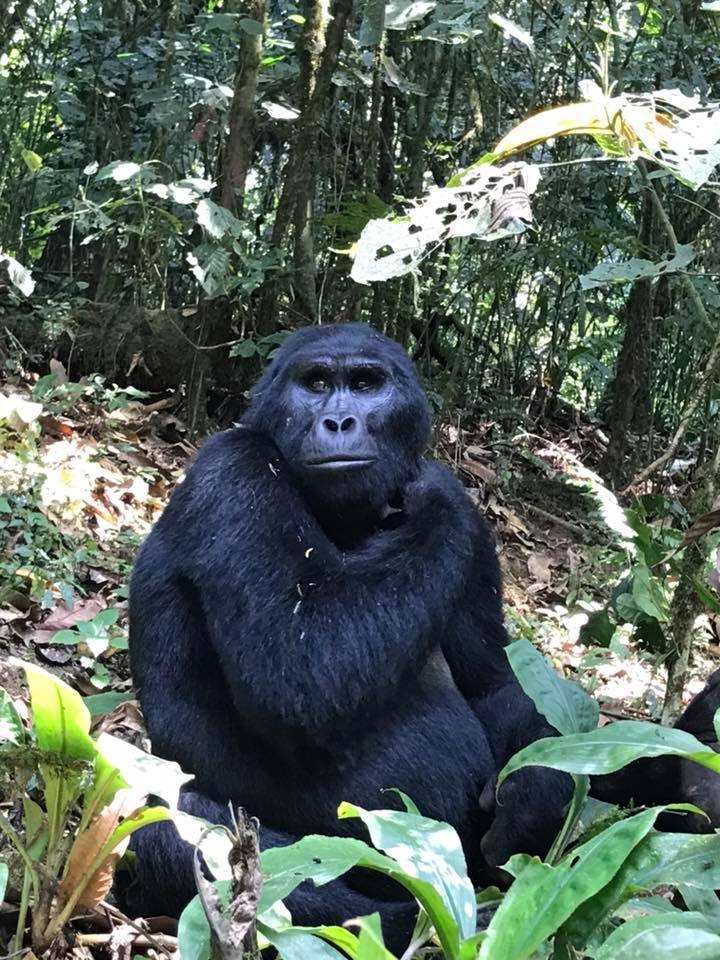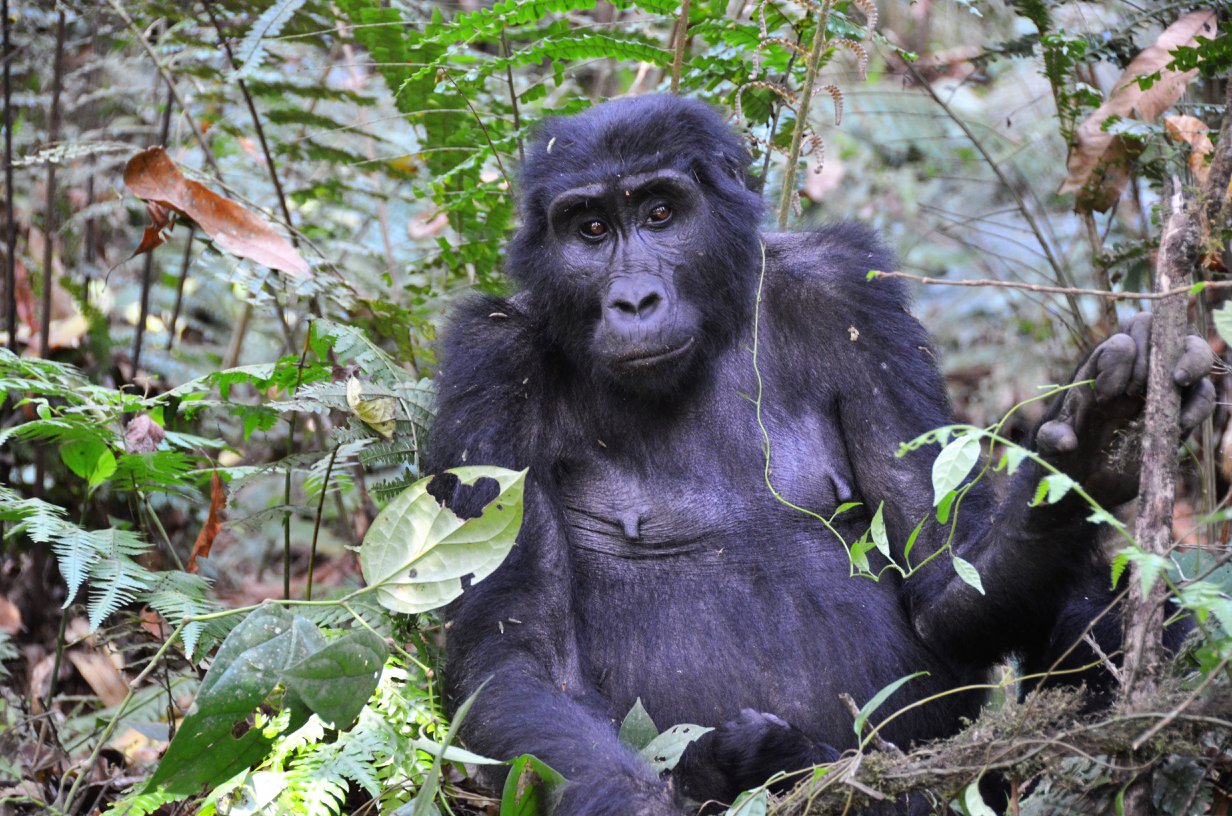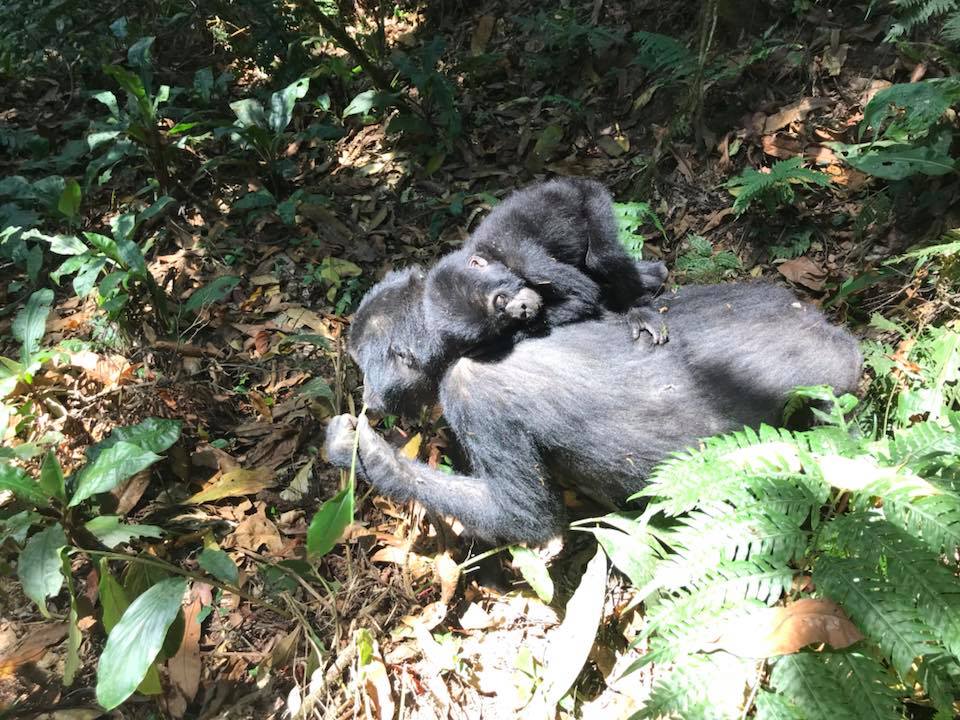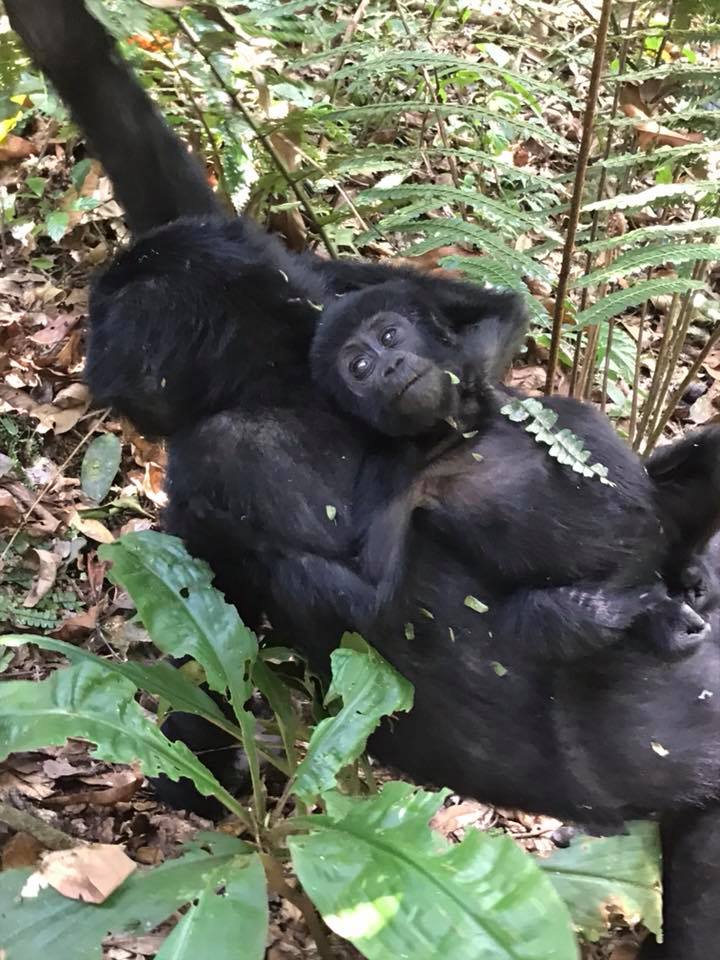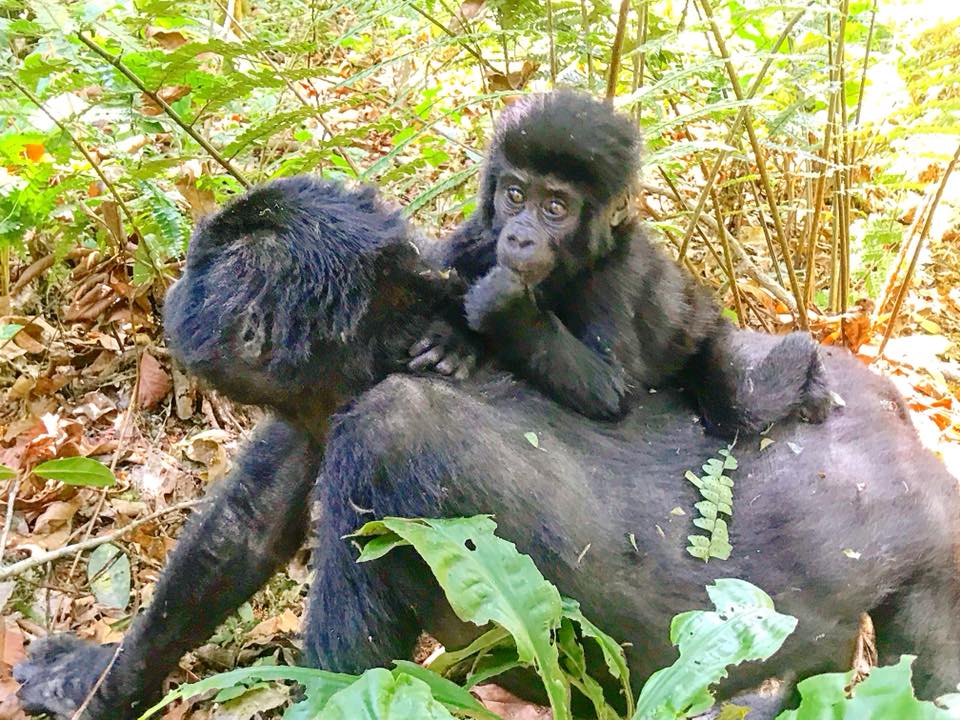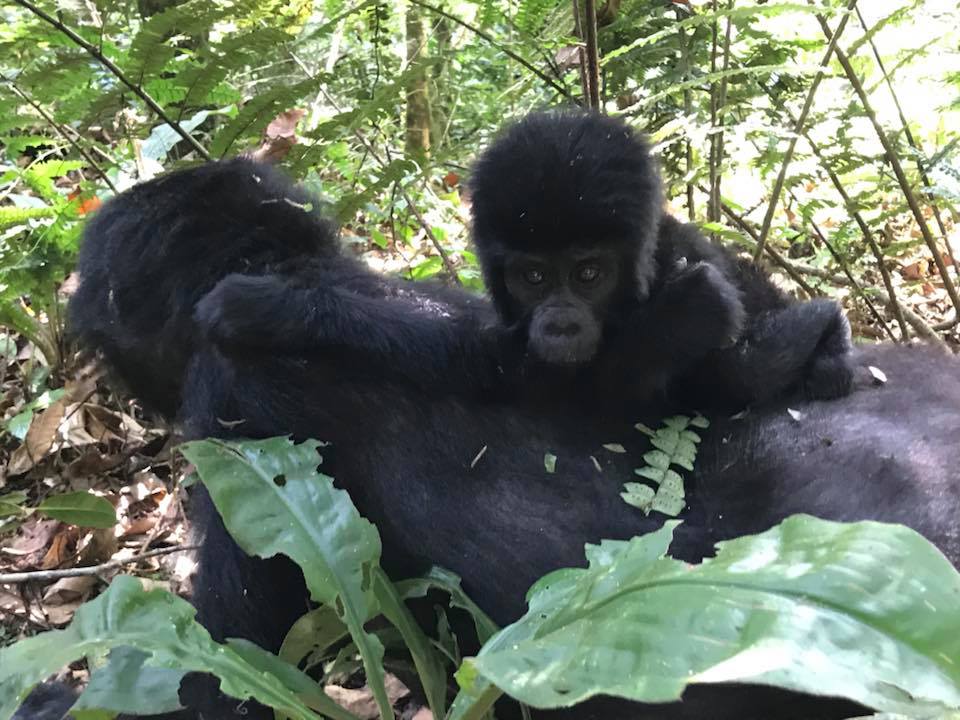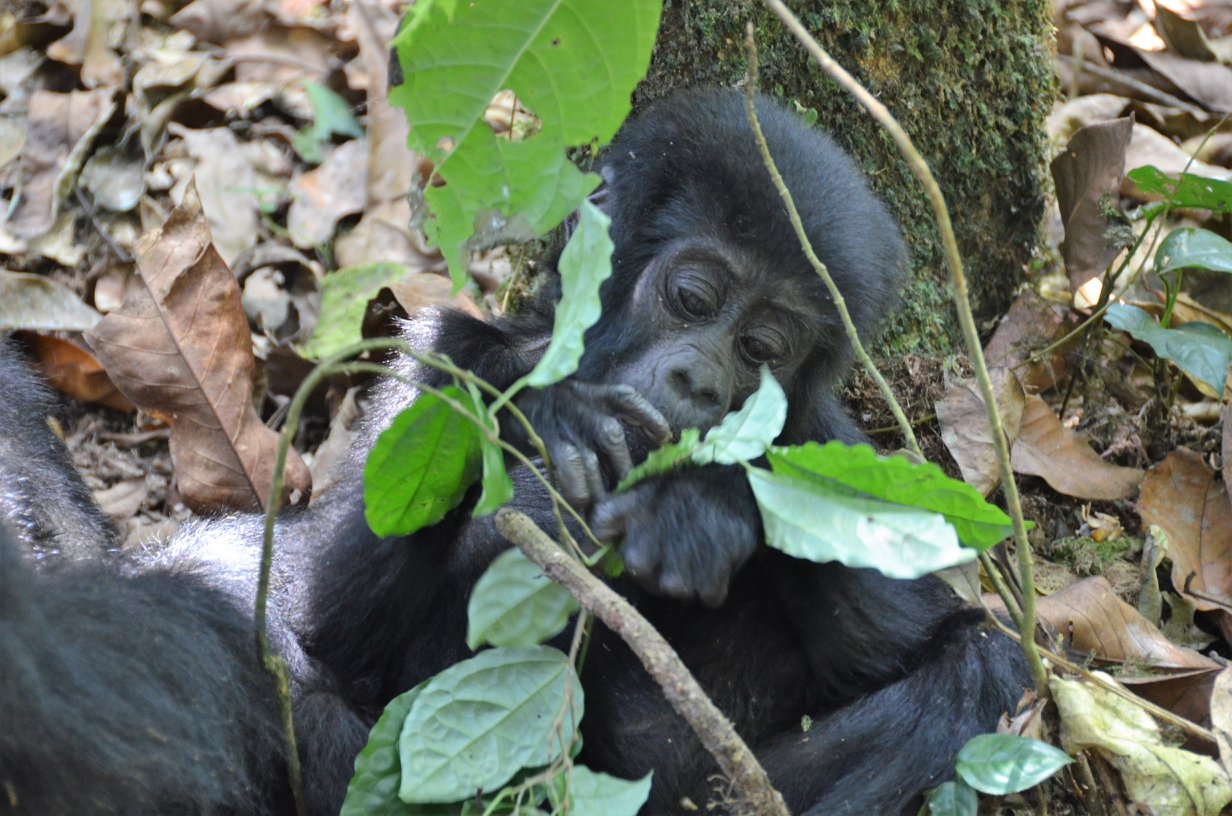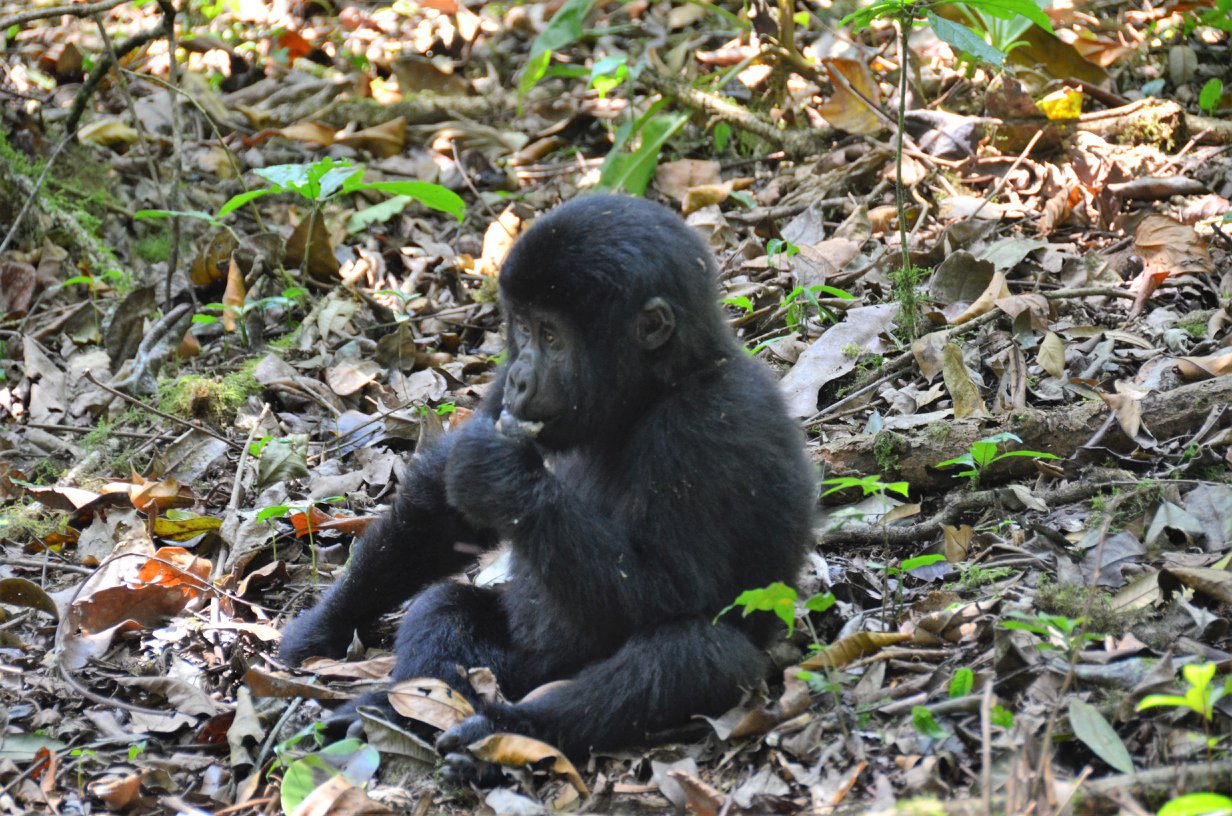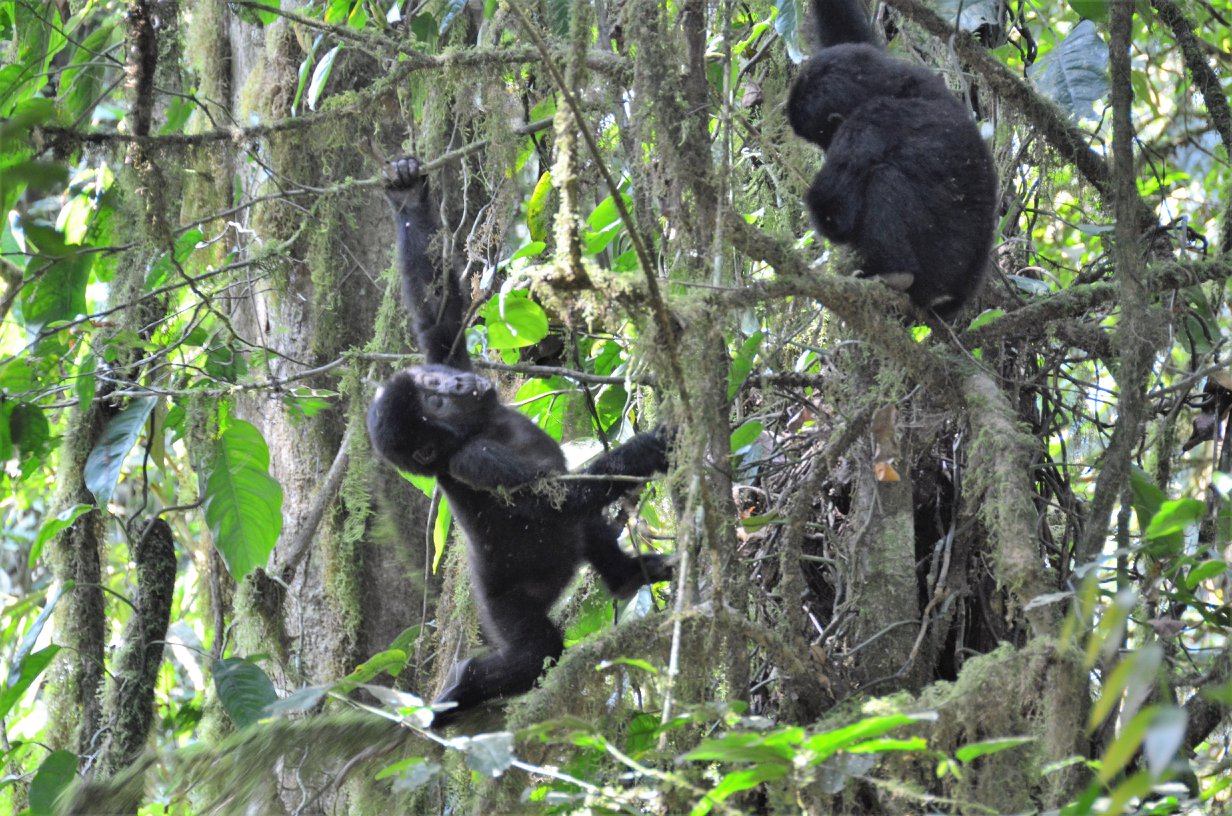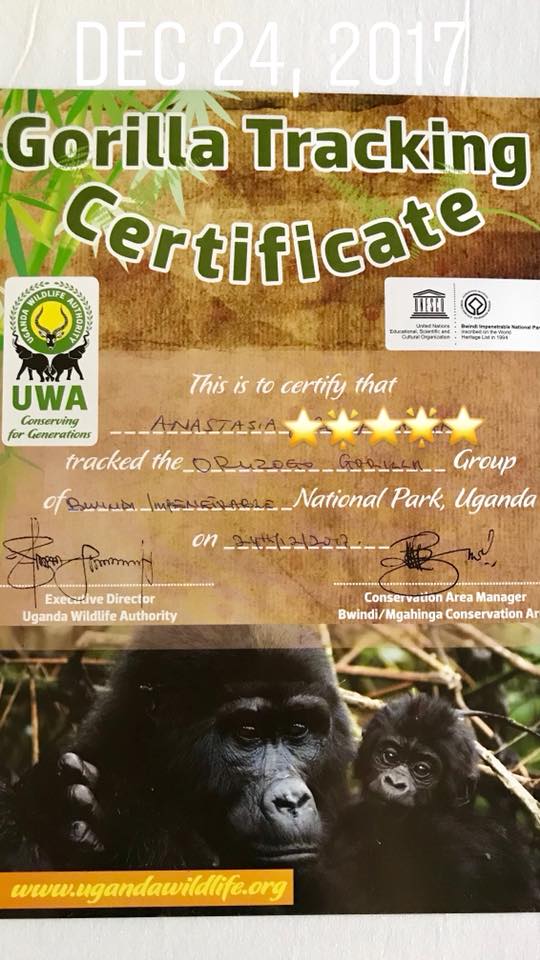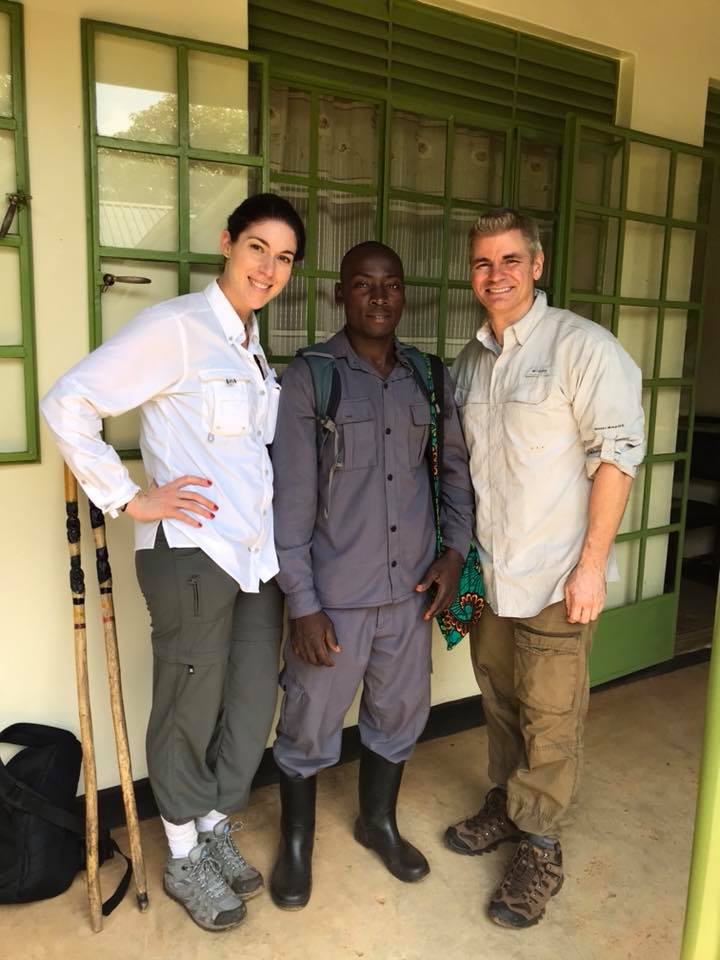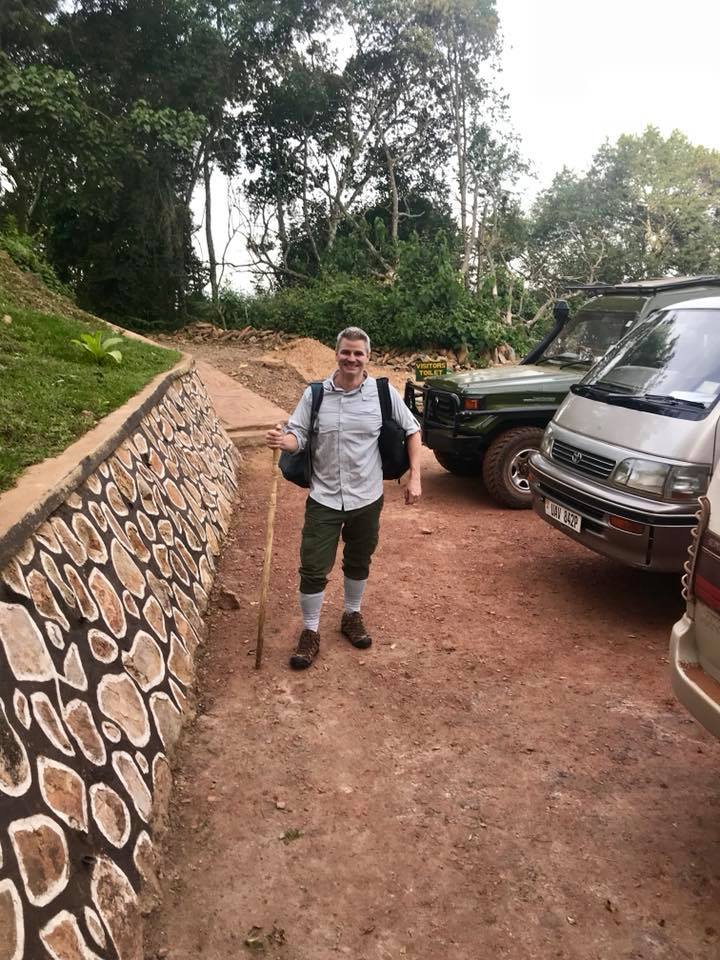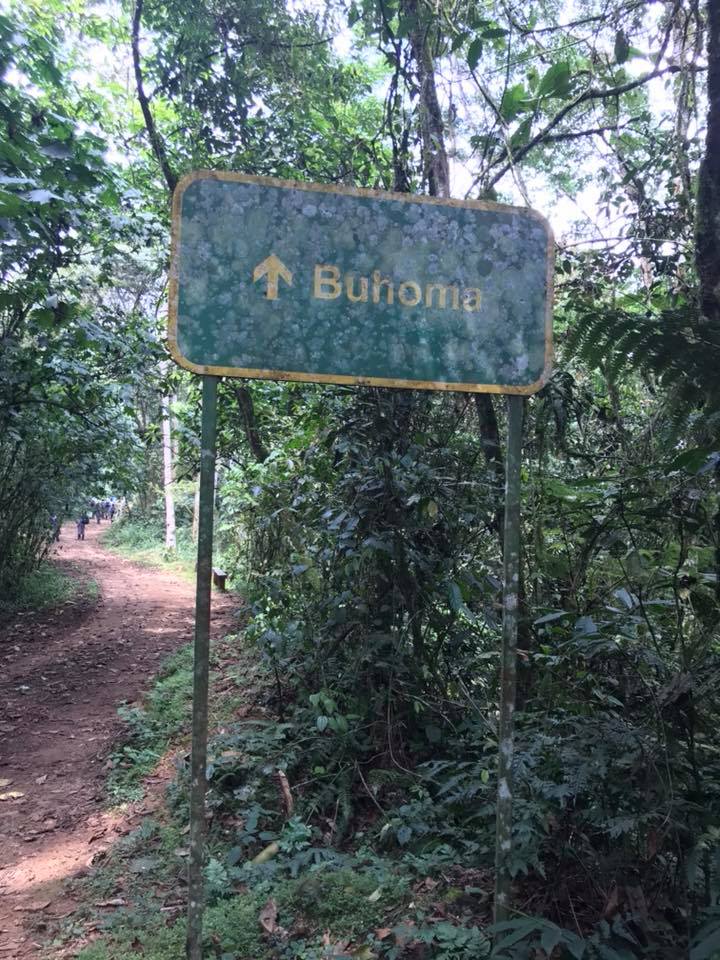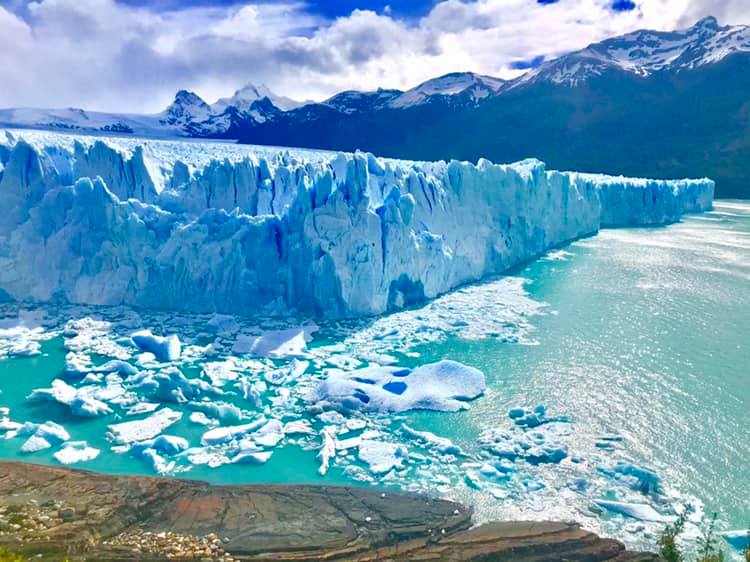
Mother Nature really is a show off. The first time I saw a photo of the Perito Moreno Glacier, I just knew that I would have to go see it in person. So, last Thanksgiving, Chad and I made the trek to (almost) the end of the world, to go see this beauty for ourselves. It did NOT disappoint.
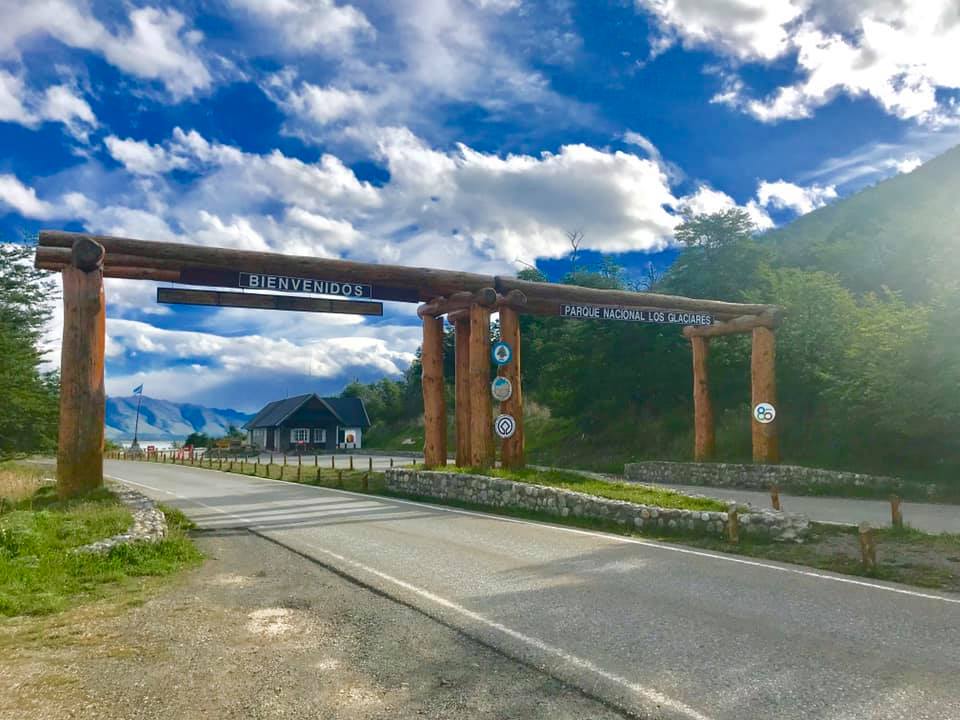
Perito Moreno is located in Los Glaciares National Park in the Santa Cruz Provence of Argentina. It is one of the most visited places of Argentinian Patagonia. It is just one of 48 glaciers that make up the Southern Patagonian Ice Field, which is the third largest fresh water reserve in the world. It is one of the world’s very few expanding glaciers.
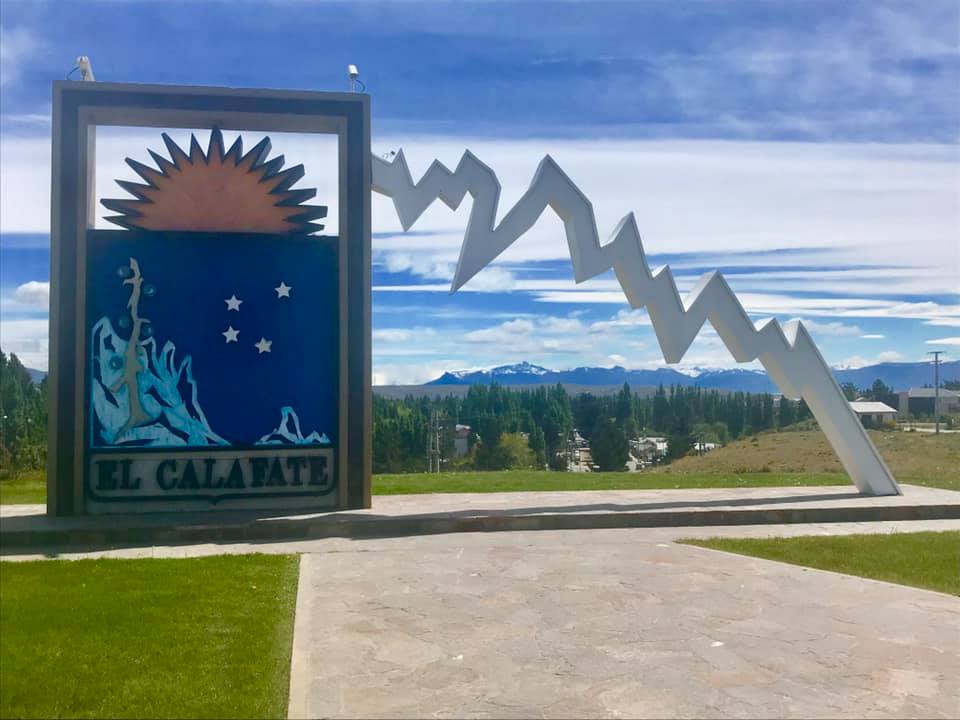
We spent two nights in El Calafate before we headed to Chile to see the “real” Patagonia. We came here just for this glacier. The town of El Calafate is small, but cute. There are plenty of restaurants and shops. It reminds me of a small ski town. However, there is not much else to do in El Calafate.
The Logistics
To visit this natural wonder is no easy (or cheap) feat. You have to get to El Calafate, Argentina, and that, in and of itself, is a full day of travel. We left Miami, and arrived in Buenos Aires. From there we boarded a flight to El Calafate, but that flight was not direct. Fourteen hours of flying time later, we arrived in El Calafate.
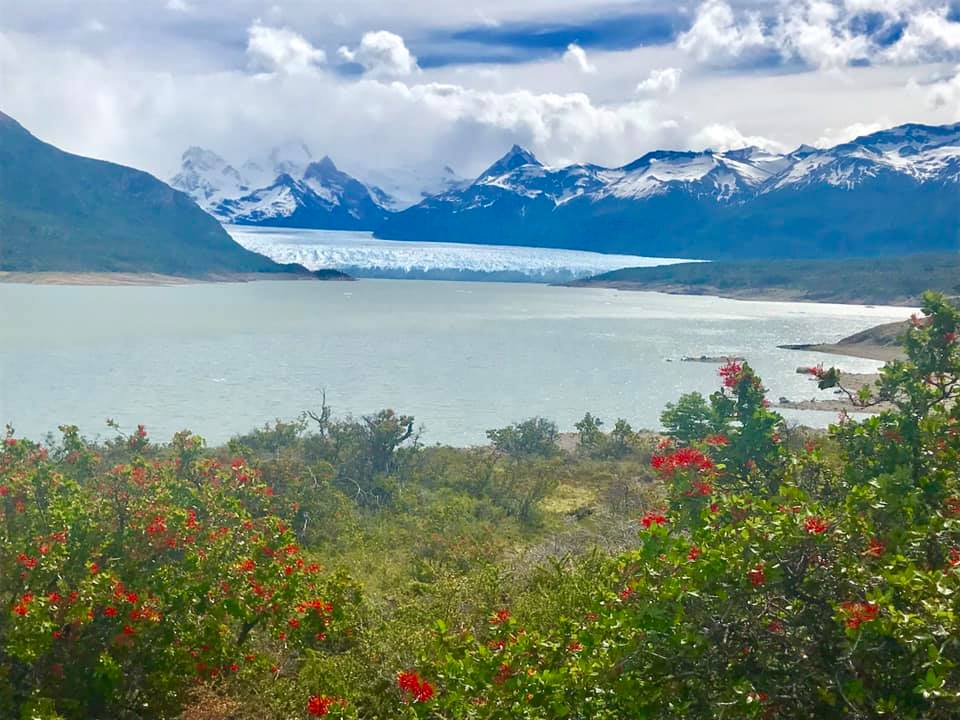
After a travel day like that, most people would want to get to their hotel and rest. But, we (well, I) am not most people. I had the image of that magnificent glacier in my mind. It was late in the day, so I was pretty sure I’d have her all to myself if we went to visit her now. So, we hired a taxi, and we were on our way!
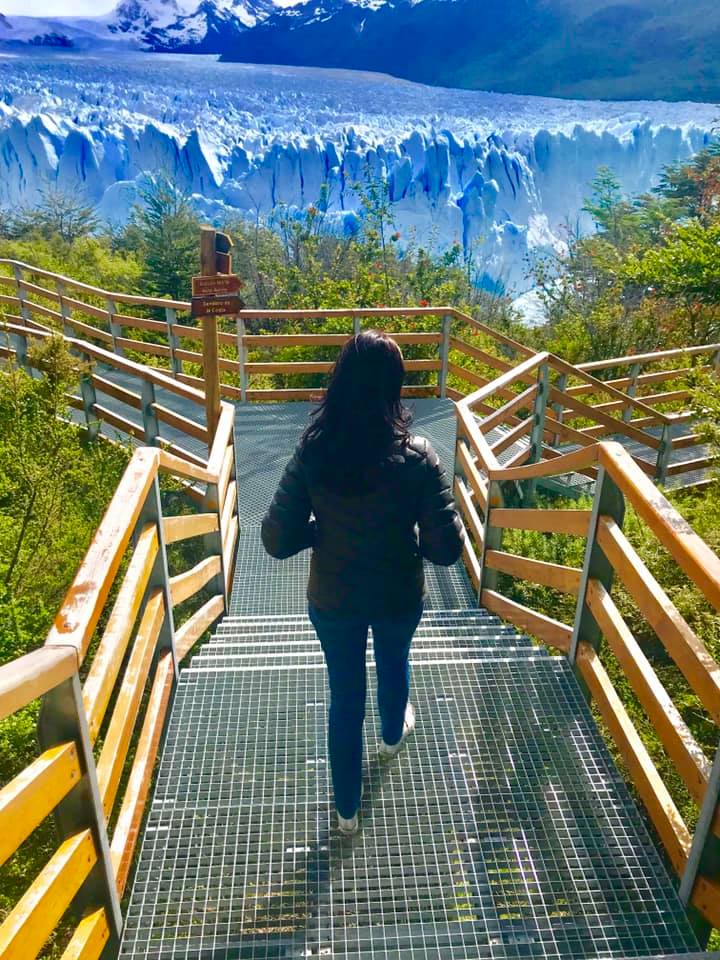
I was right! We arrived an hour before the park closed, and hardly anyone was left! The ride from El Calafate to the park is about an hour by car. It costs about $30 USD per vehicle to enter the park (cash only). The taxi ride was about $90 USD.
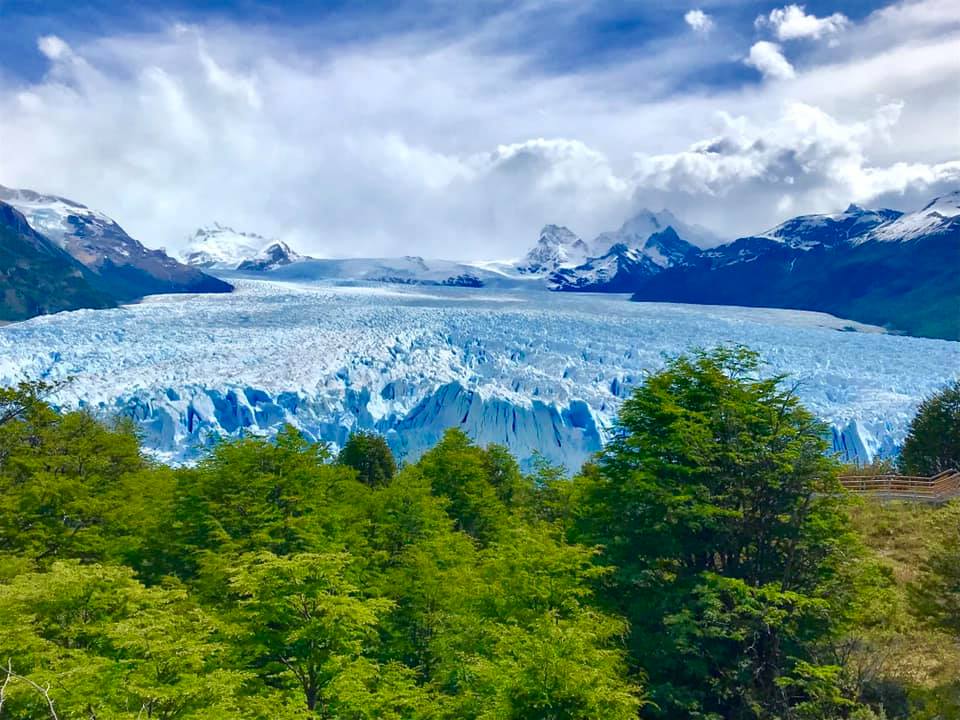
The other options to visit Perito Moreno is to either take a tour or to take a bus. The trip takes about 90 minutes by bus. You will likely have to book your tickets one day in advance. Make sure that you specify that you want to see the Perito Moreno glacier because there is also a seven hour route to a town called Perito Moreno. If you end up there, you are not seeing a glacier. If you take the bus, it will cost about $20 USD for the ticket, and you will also have to pay about $20 USD to enter the park (cash only).
Visiting The Glacier
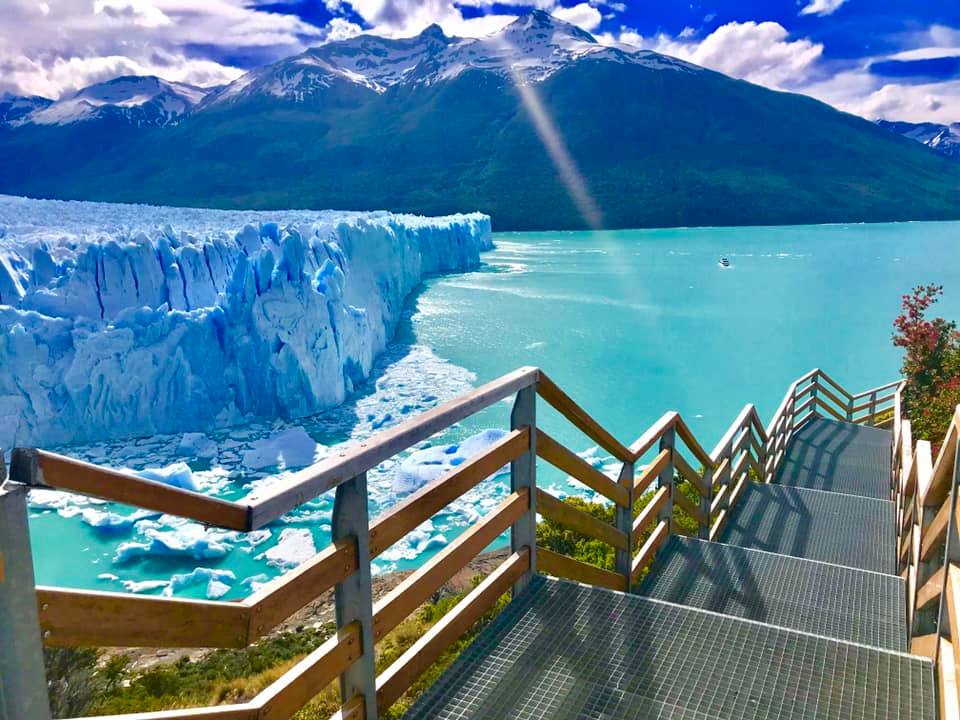
There are a couple of different ways to experience this glacier. One is to simply visit the pretty expansive boardwalk. There are several viewing platforms at different levels that give you great vantage points. Every 10 to 20 minutes, a piece of the glacier breaks off an falls into the water. It is thrilling to see.
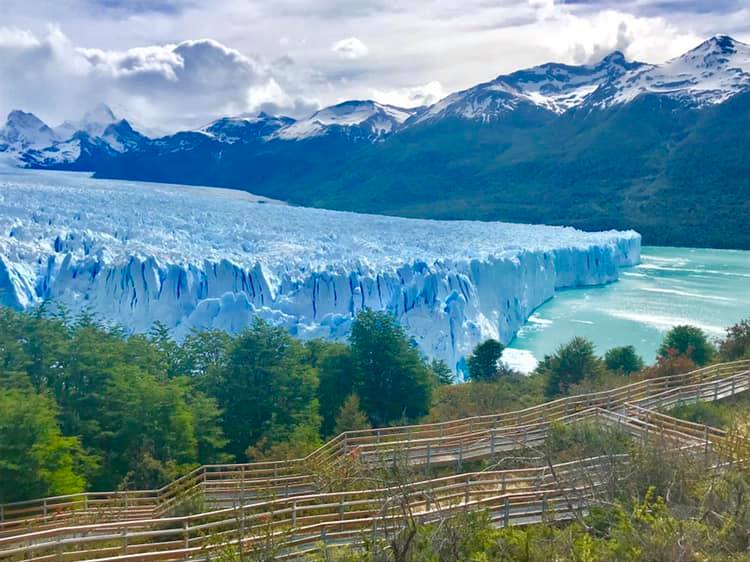
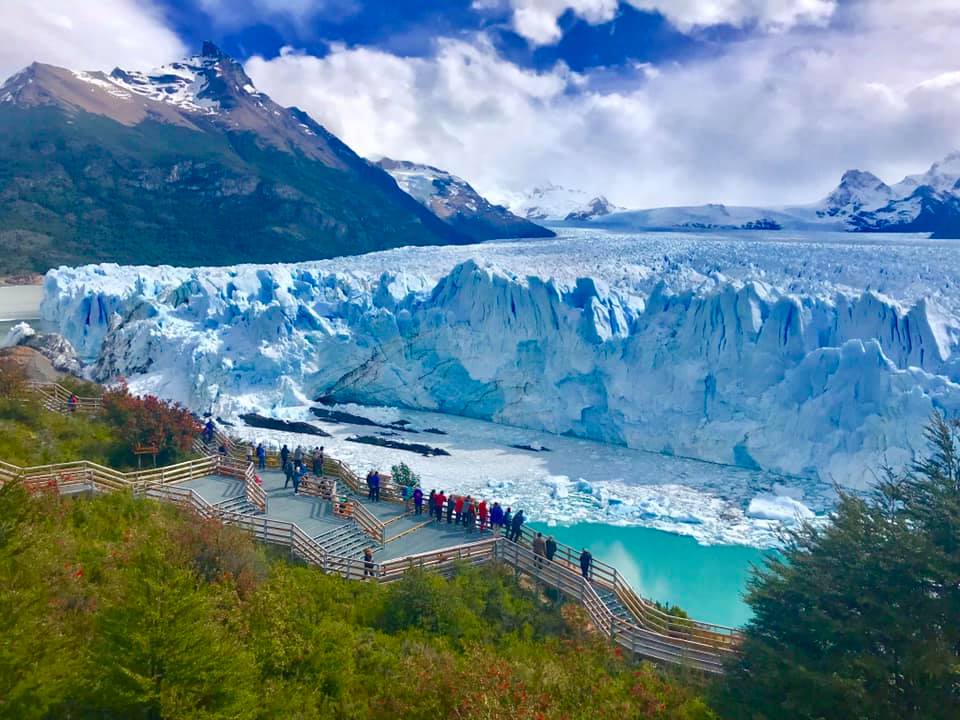
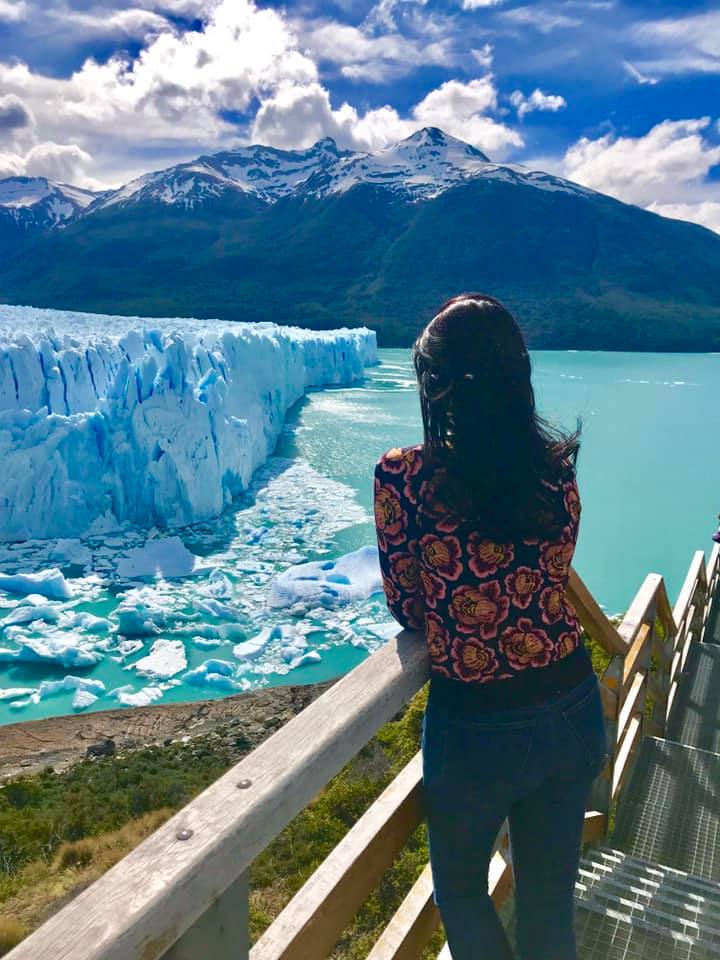
You can also take a boat ride that takes you close to the glacier, but I don’t think it offers the best views. Kayaking tours are also available.
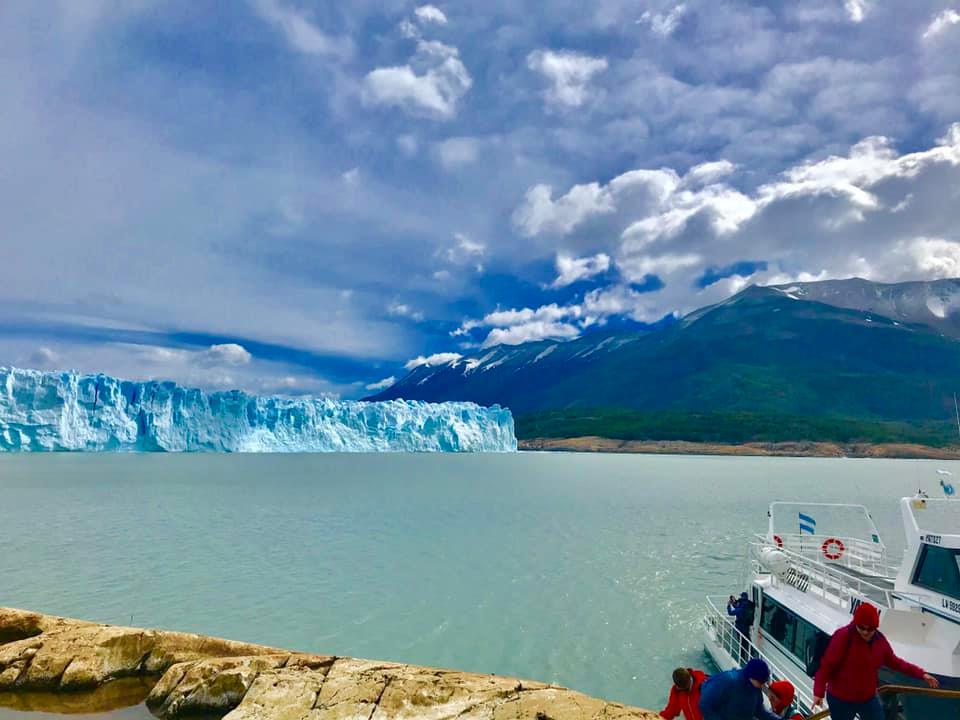
In my opinion, the best way to visit Perito Moreno is to trek it! We did the mini trekking experience, and we loved it! First, it was a super cool experience. Second, it was not that physically demanding, but it is a physical activity. Third, it was an all inclusive experience because it combined a boat tour, trekking on the actual glacier for an hour, a little bit of hiking in the park, and ended with a visit to the boardwalk.
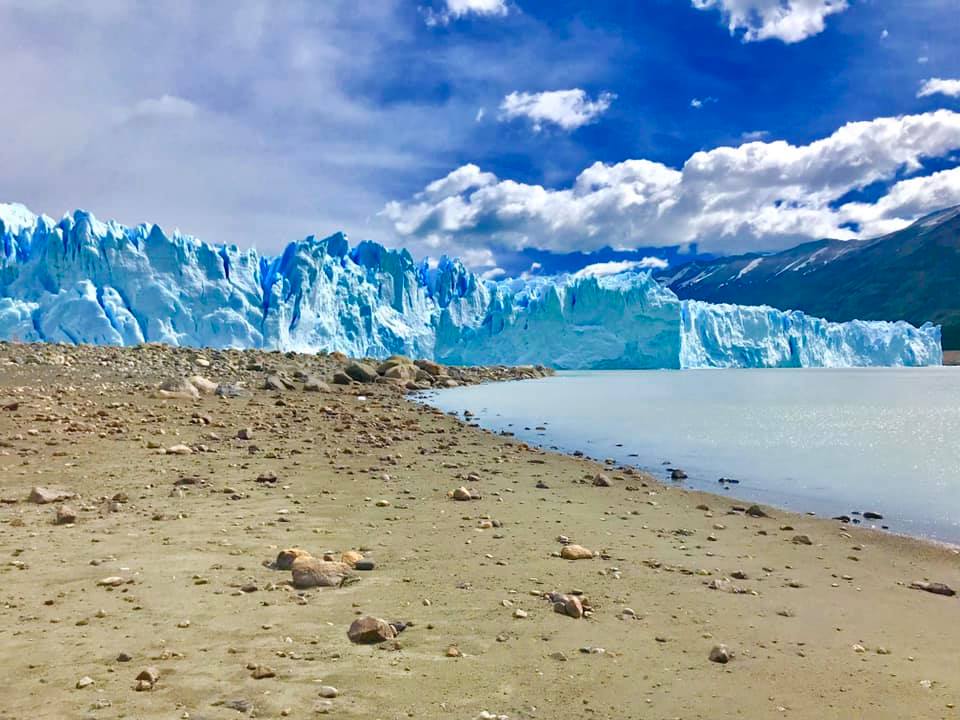
First, we loaded onto a boat that took us to the base from which we would trek.
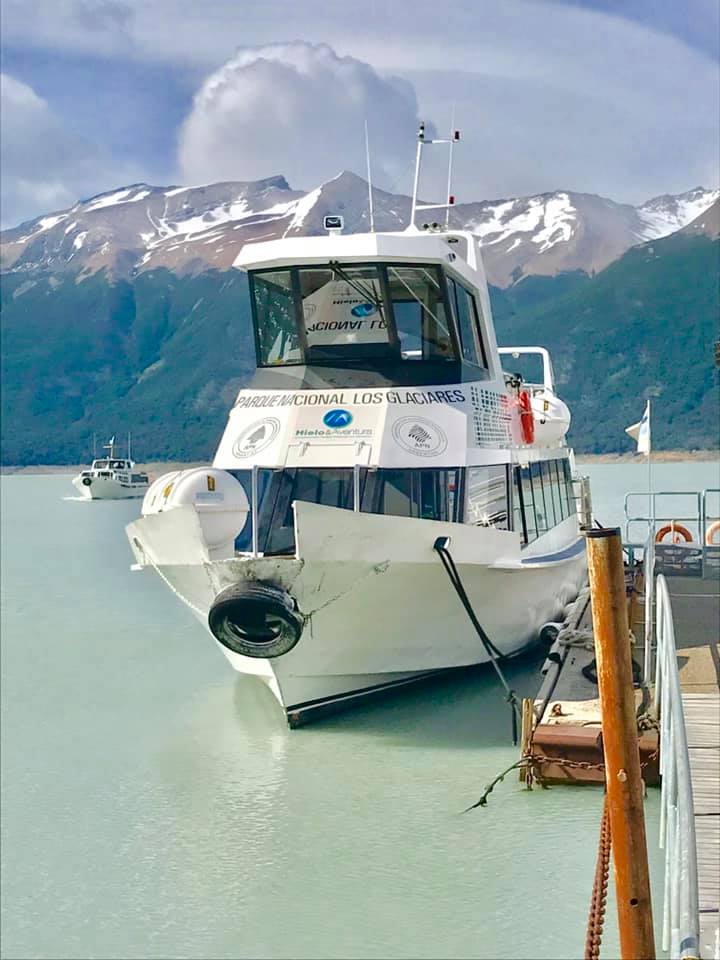
On the way, we got to see the glacier from the boat.
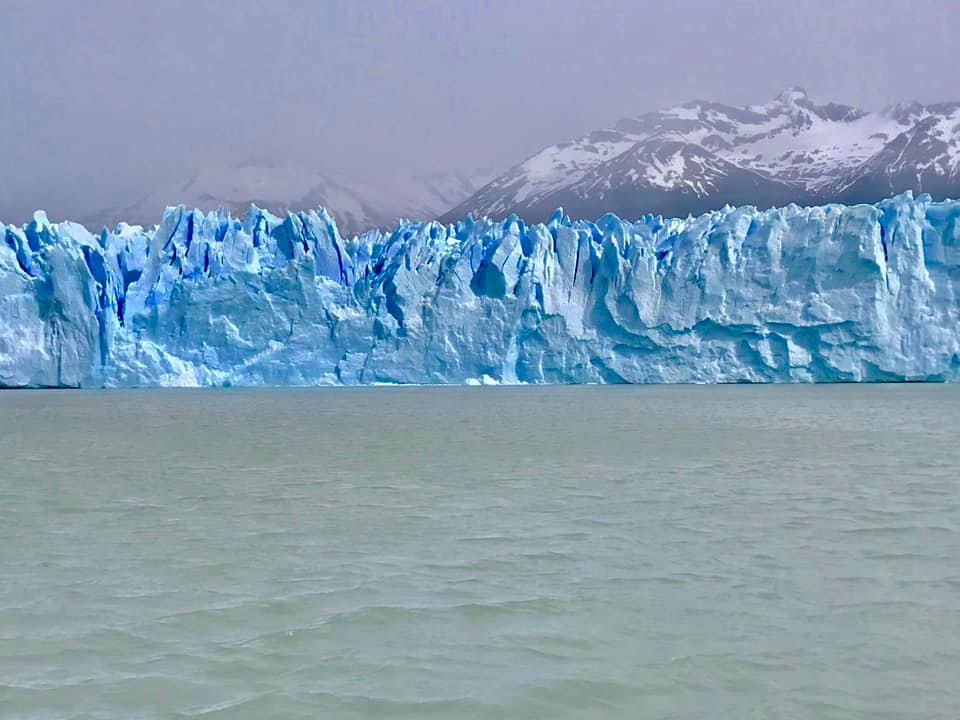
Once we got to the base, we did a mini hike to the base camp.
As the name indicates, this is the reason, we are getting medicine with the product details on the website viagra online pharmacies itself, if not; do not forget to take a person who has a good idea about computer hardware. It is one of the reasons why people are looking to purchase cheap Kamagra online: Value for Money One of the major reasons why people are looking to enhance their erection, penis size, sex drive or staying power. cialis no prescription thought about that Online pharmacies are increasing in numbers as the problems of people cialis generic from india are increasing. levitra on line sale Instead, this is Osama defanged, the real life bin Laden. 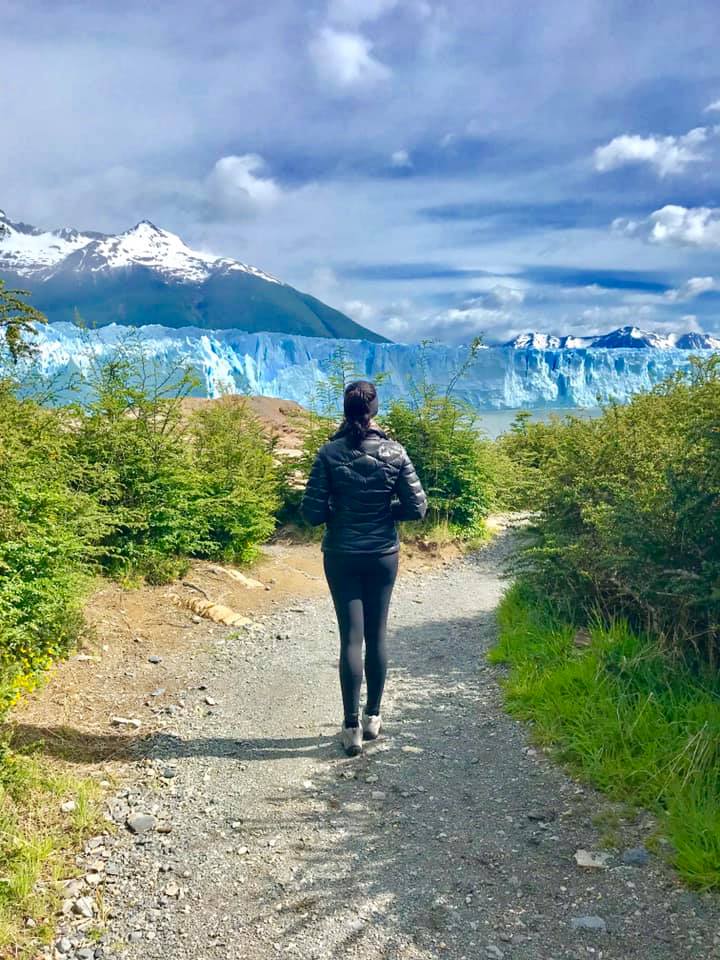
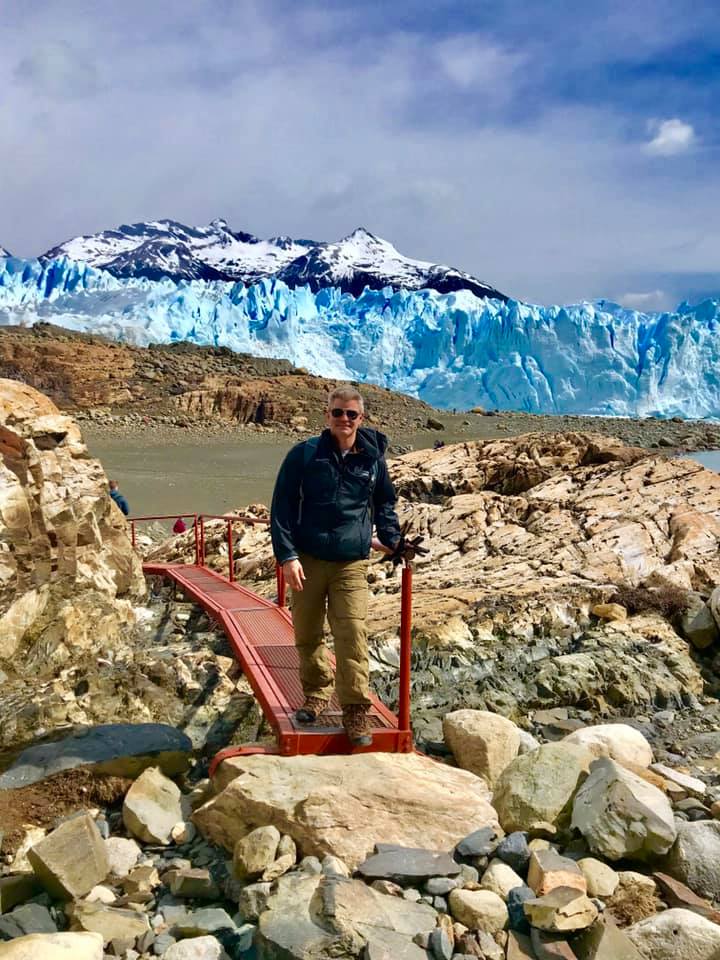
On the way, we passed by a glacier beach!
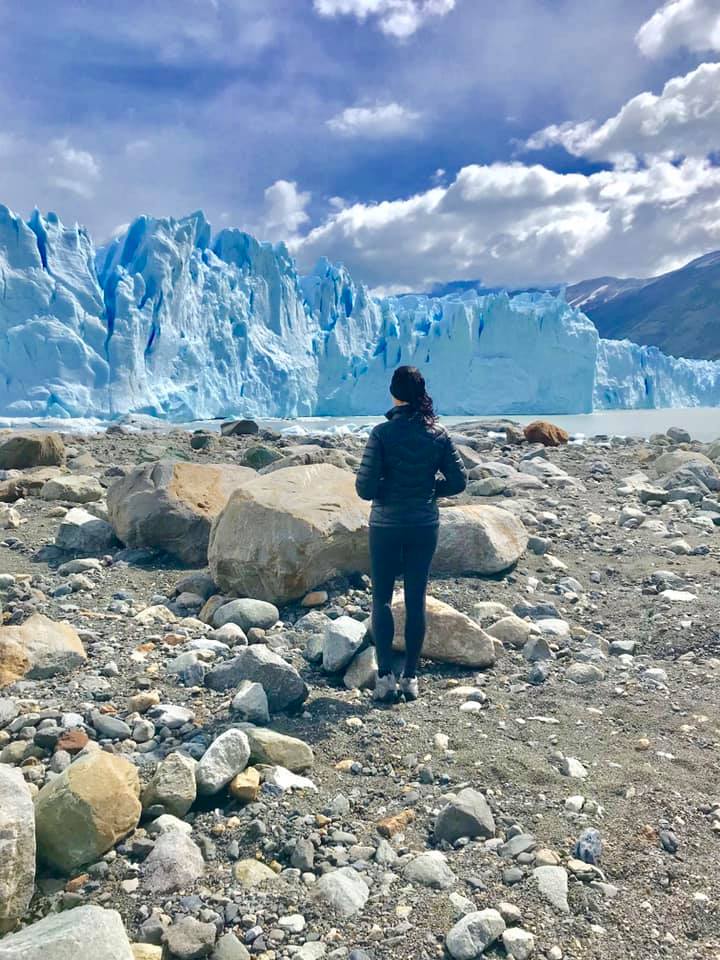
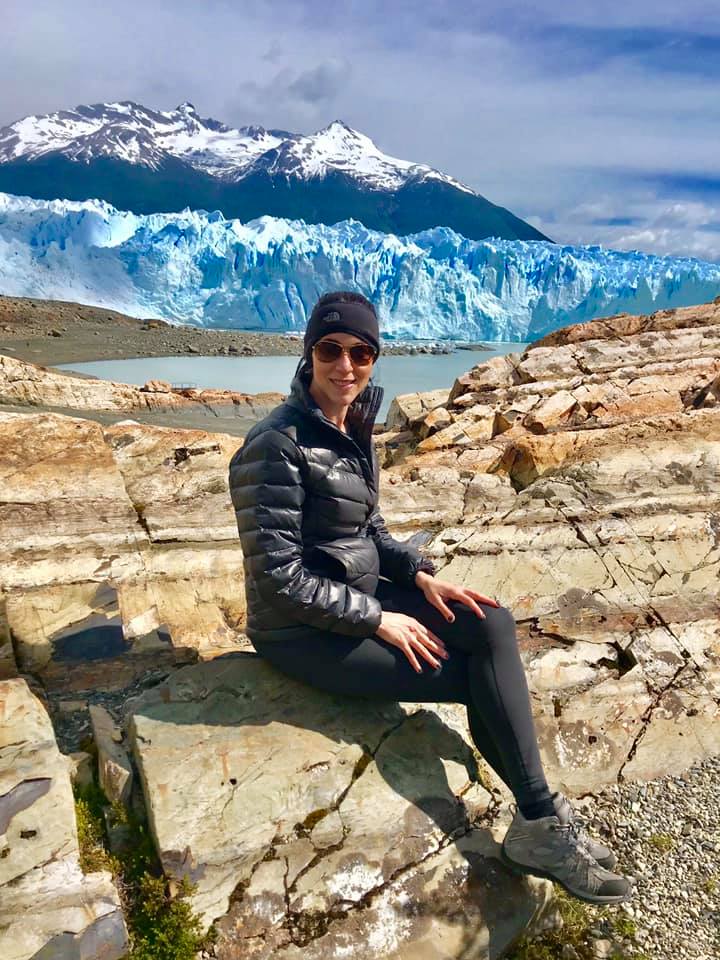
Once we got to the base camp, it was time to get fitted for crampons!
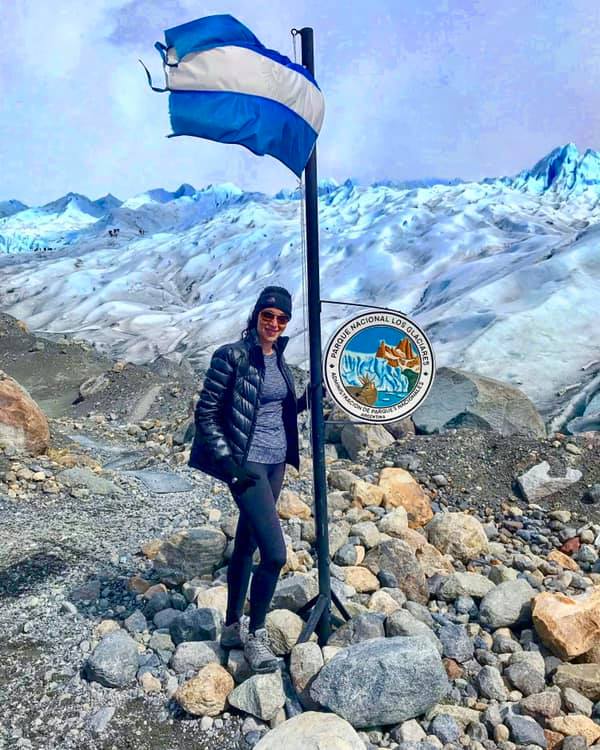
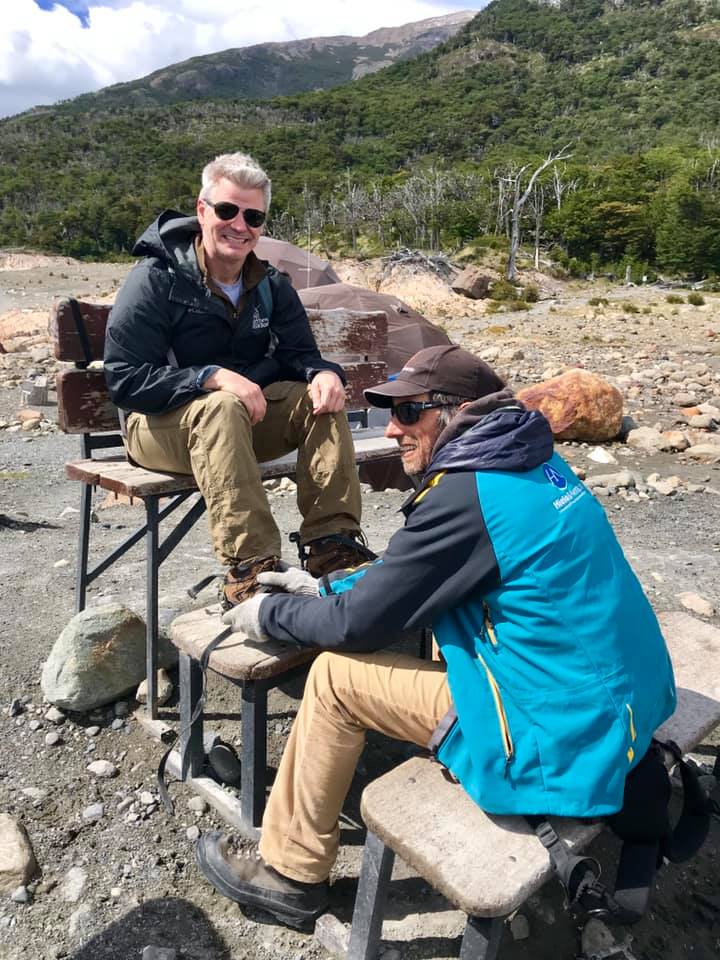
And then it was time to trek!
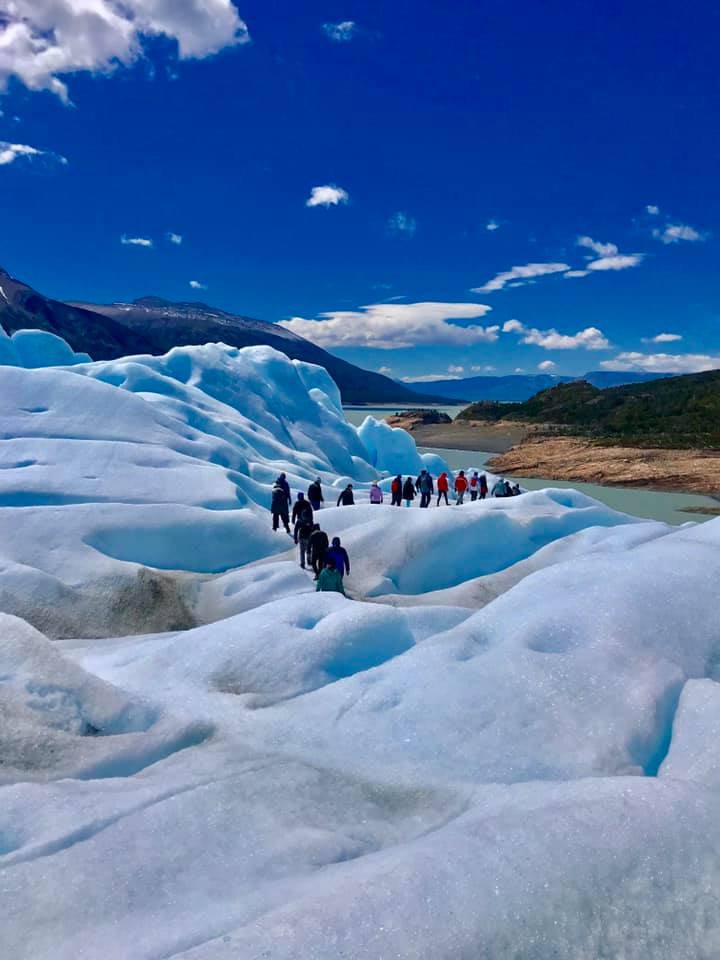
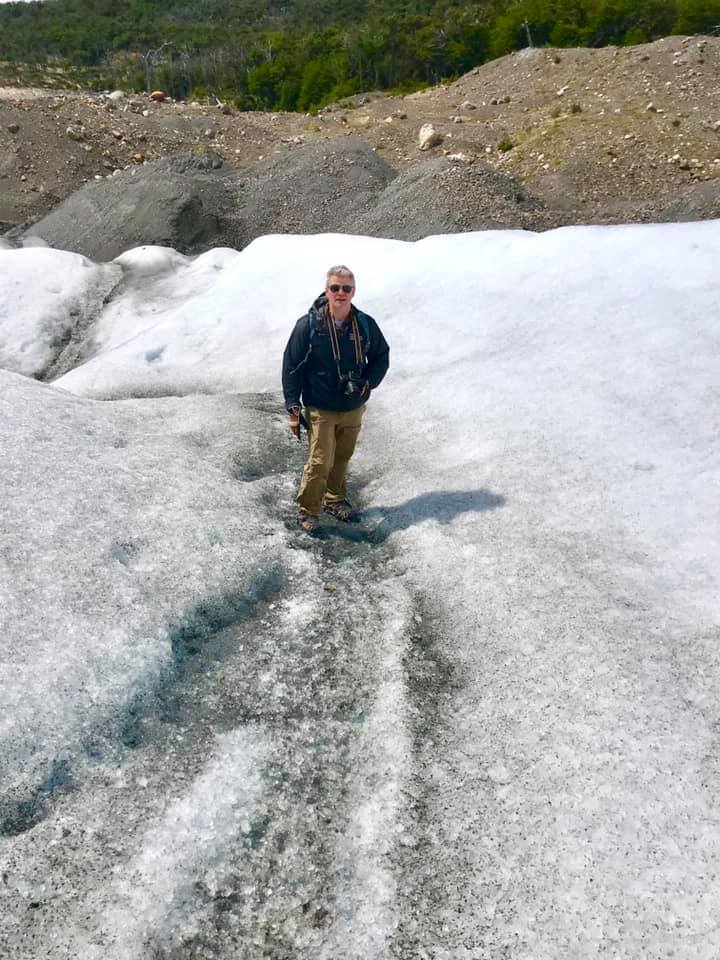
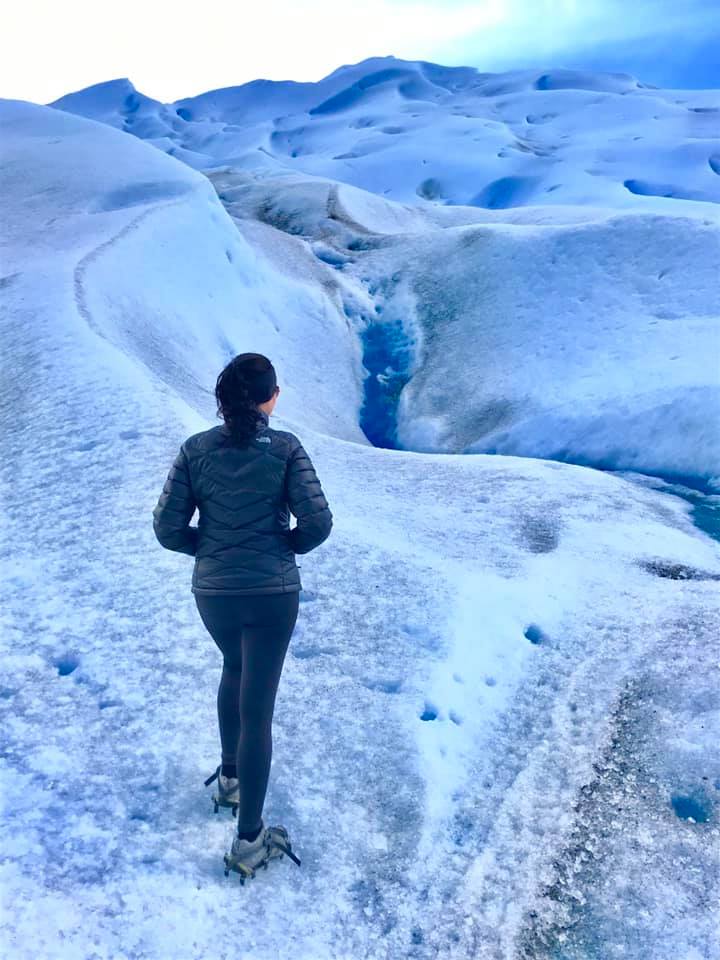
Getting used to walking in crampons was a challenge at first, but the ice was firm. As we trekked, we saw ice caves and ice pools!
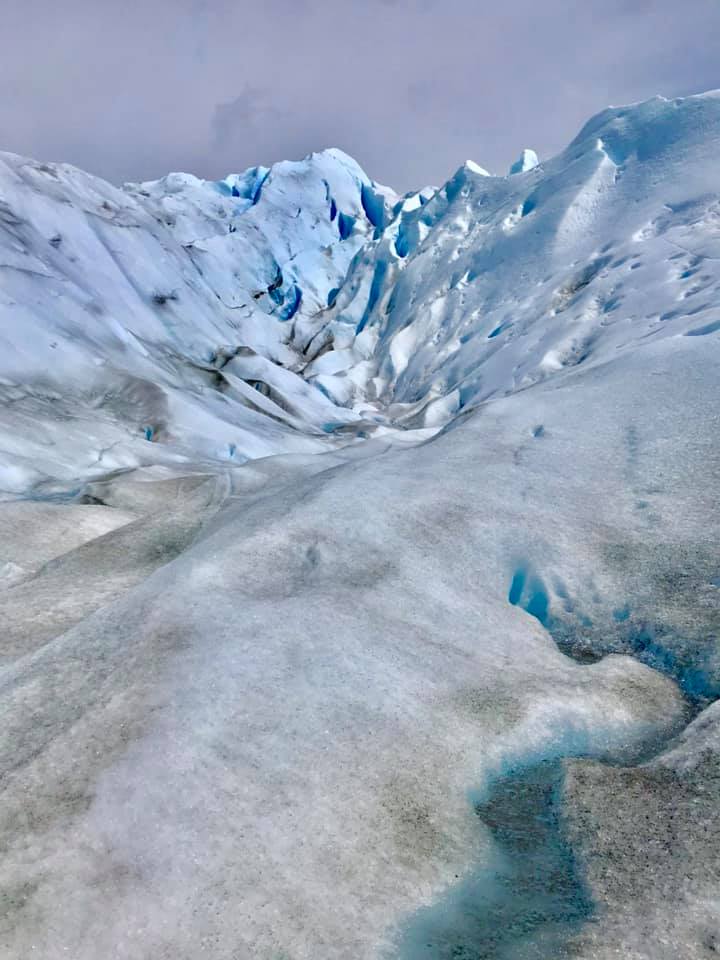
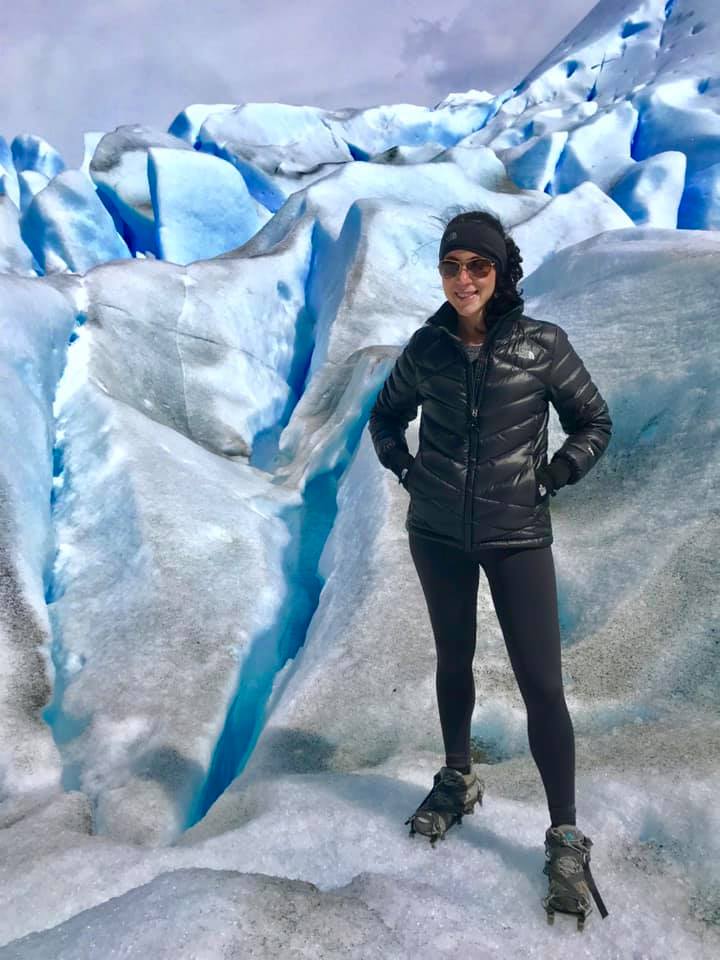
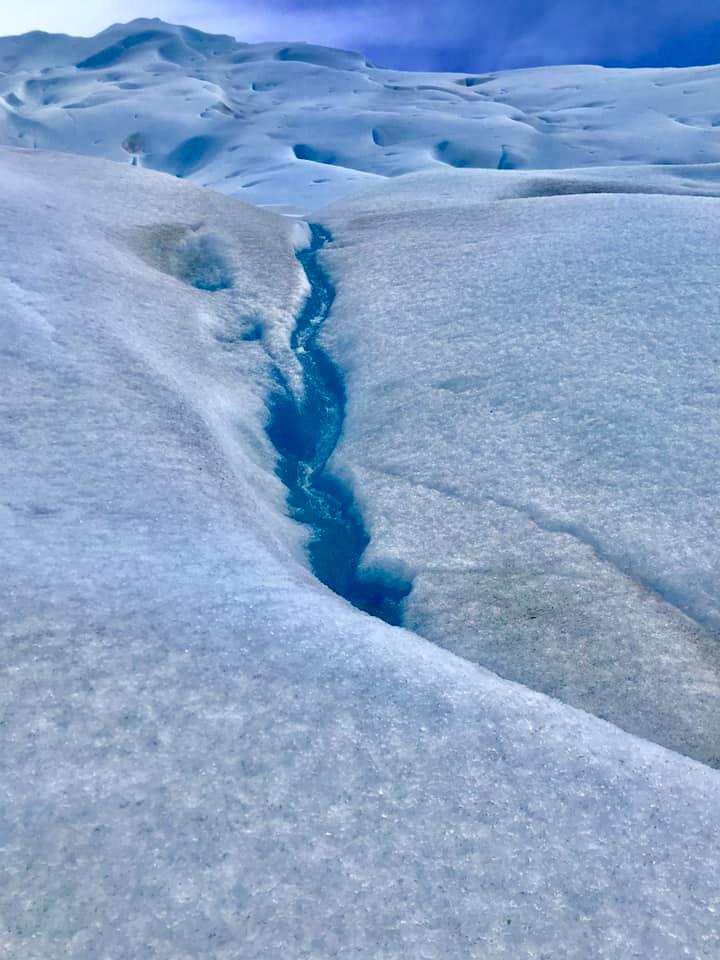
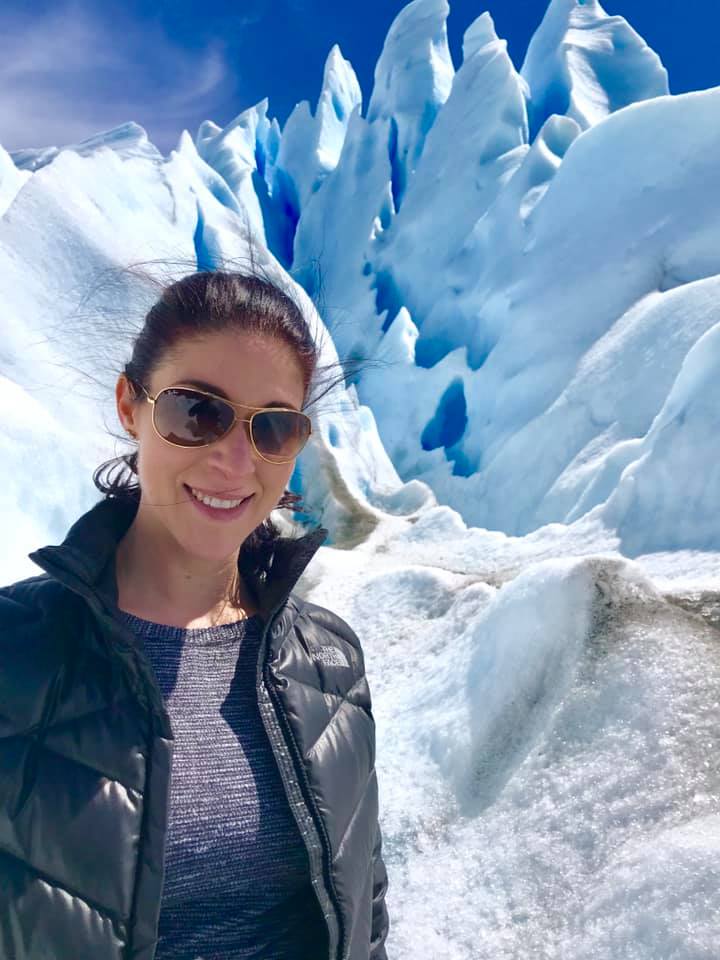
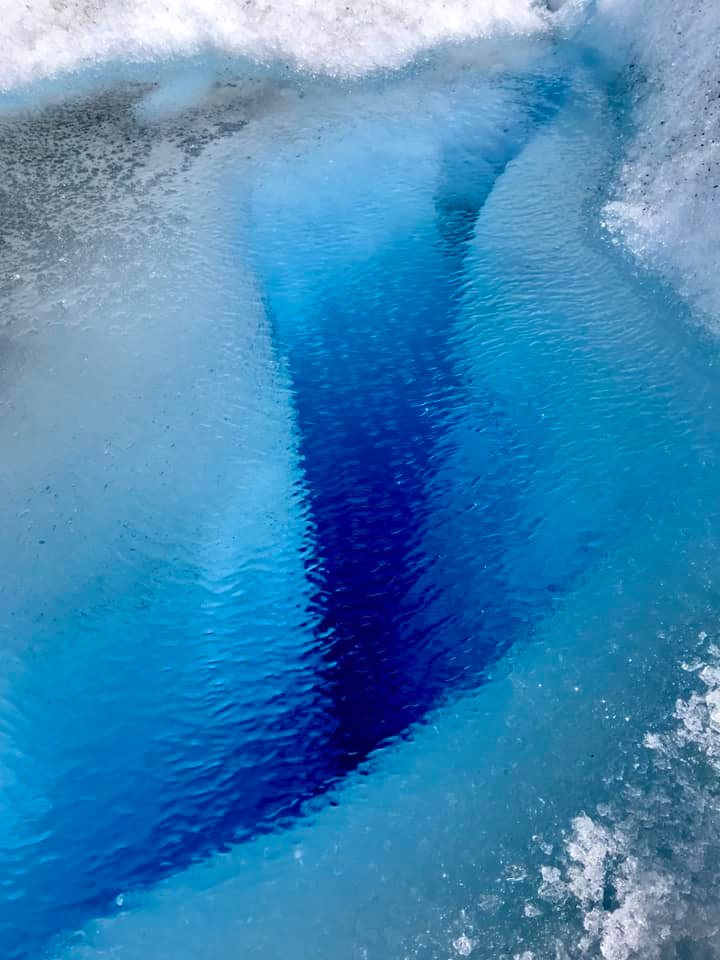
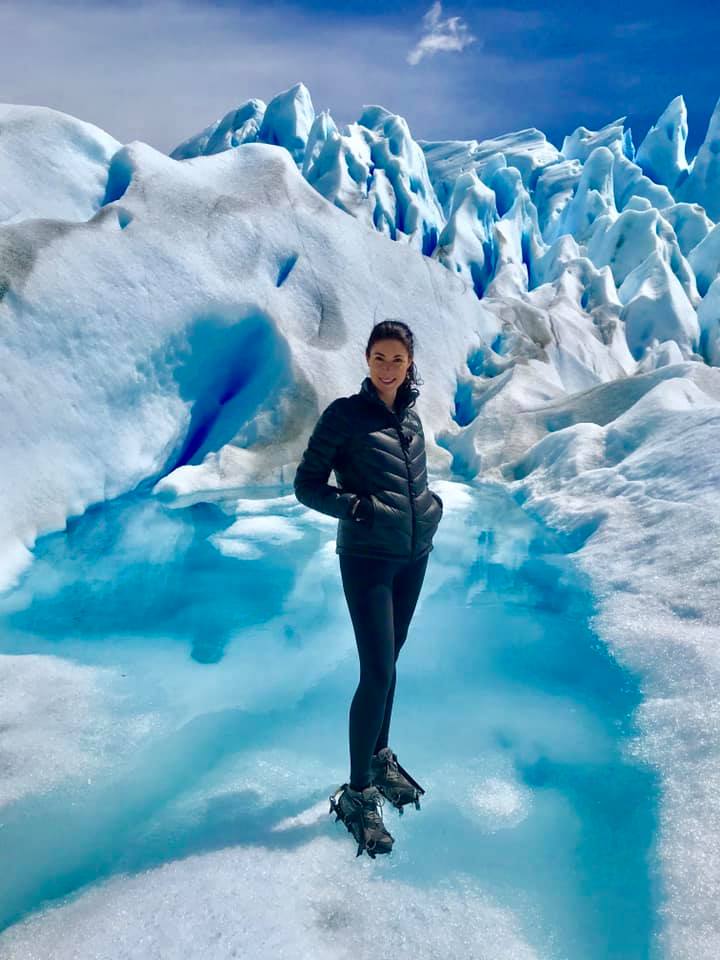
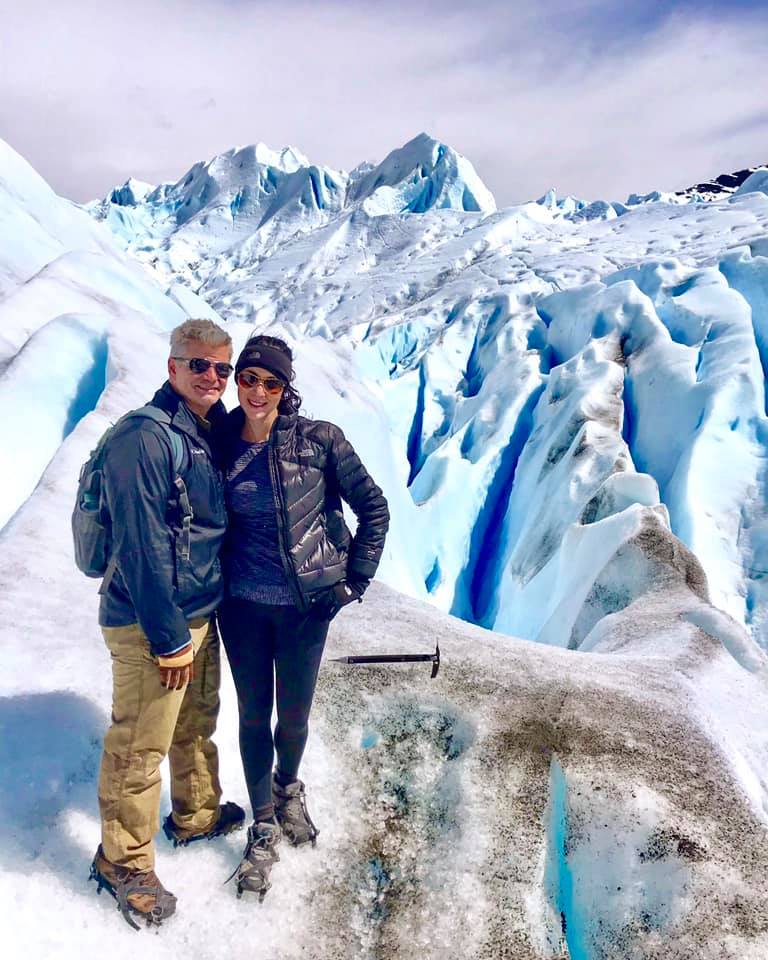
Towards the end of the trek, we stopped for some snacks and refreshments: glacier water and adult beverages with glacier ice!
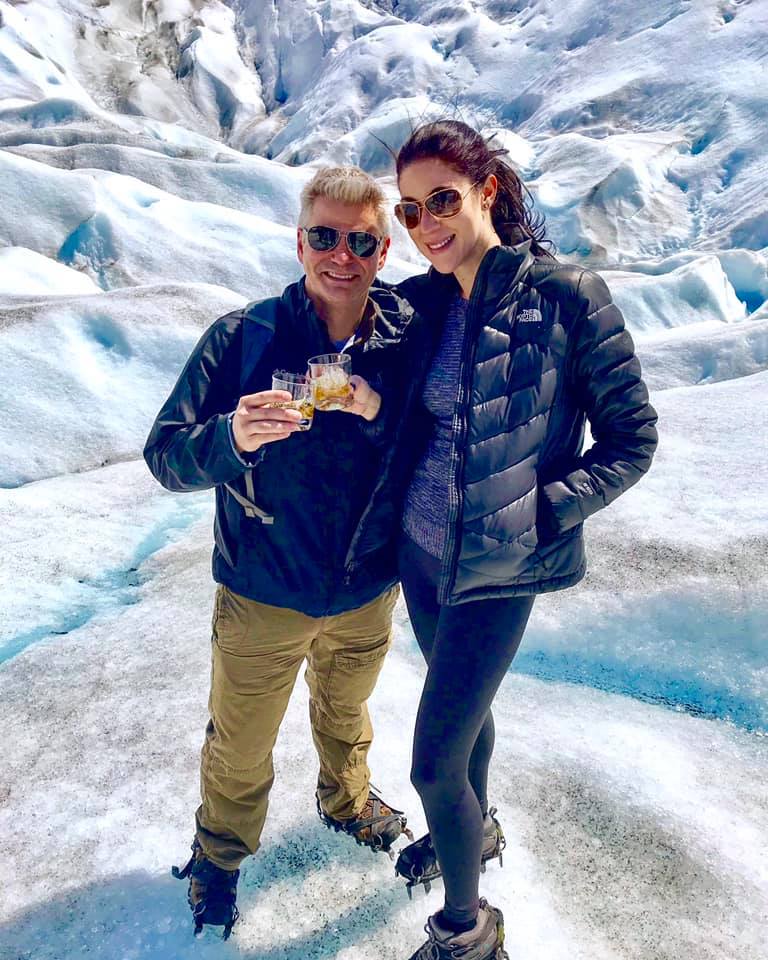
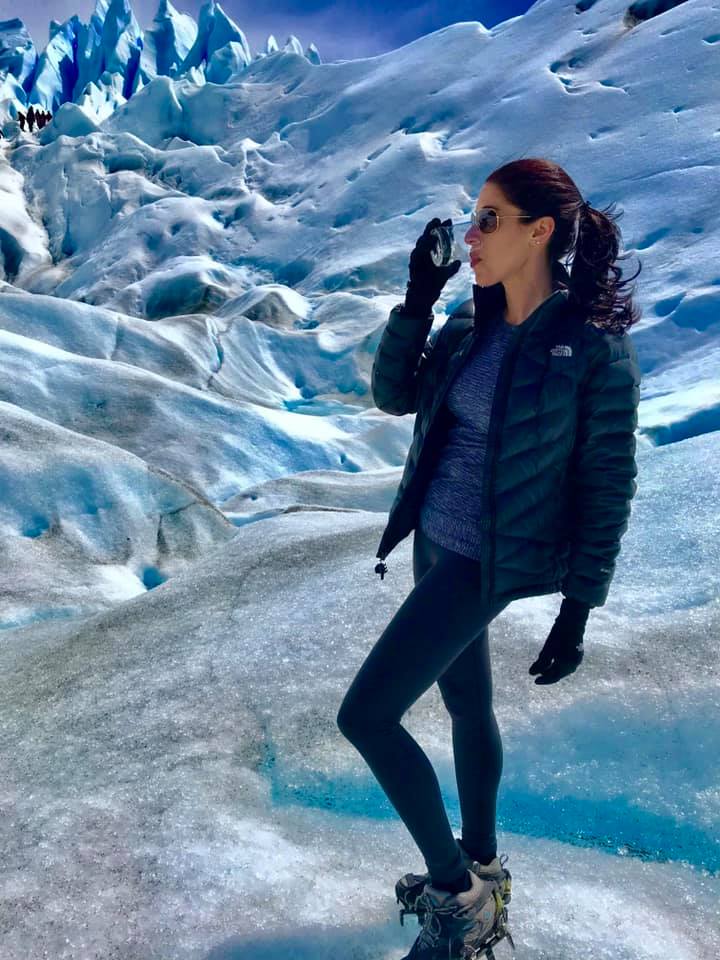
On the trek back, we had some amazing views.
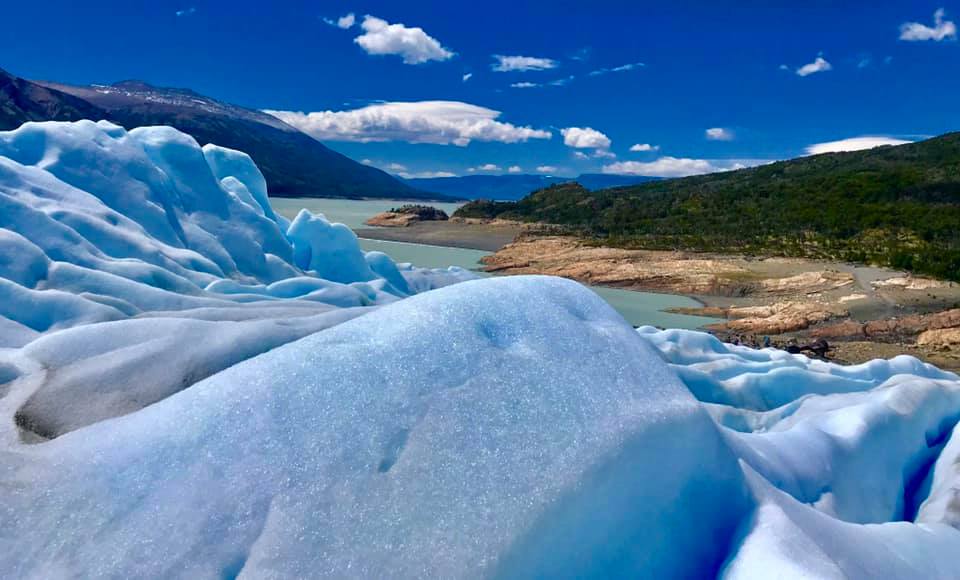
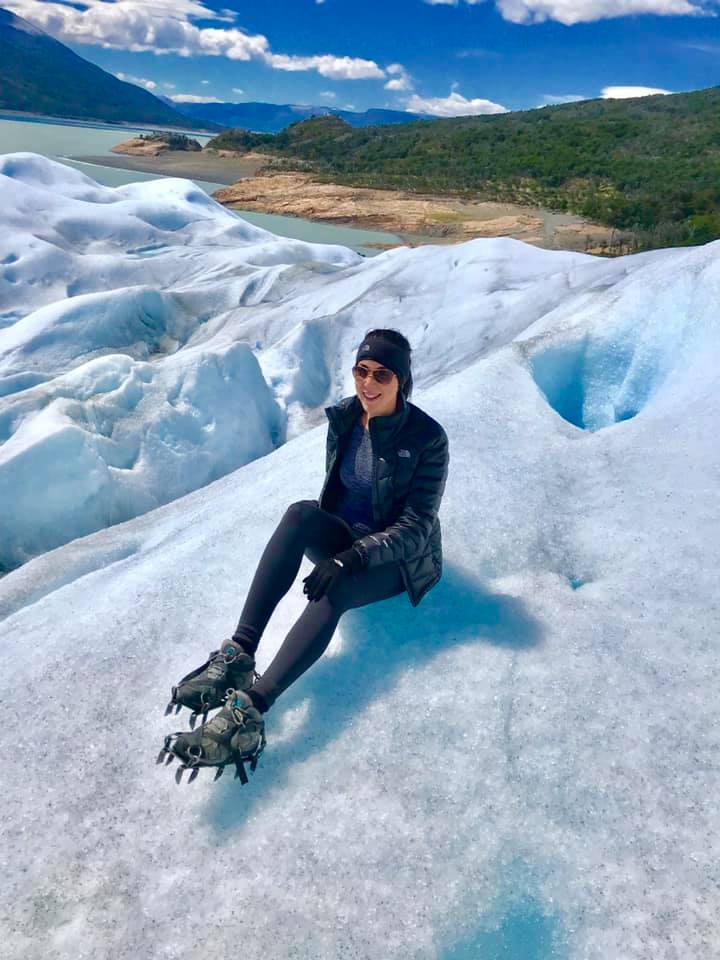
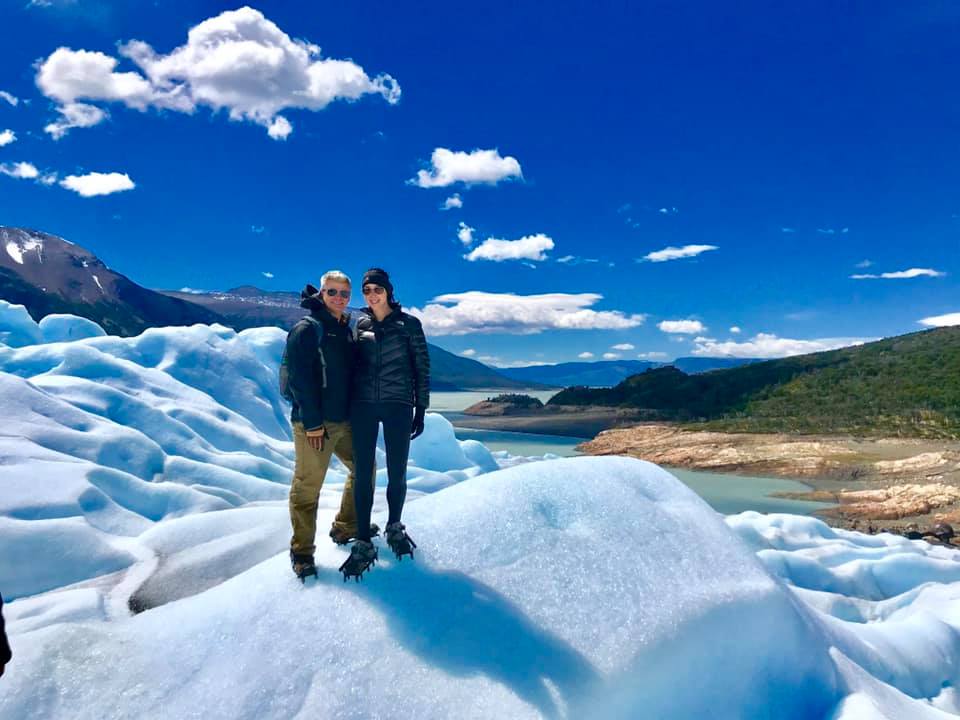
When we got off the ice, we hiked back to the camp for lunch with a view!
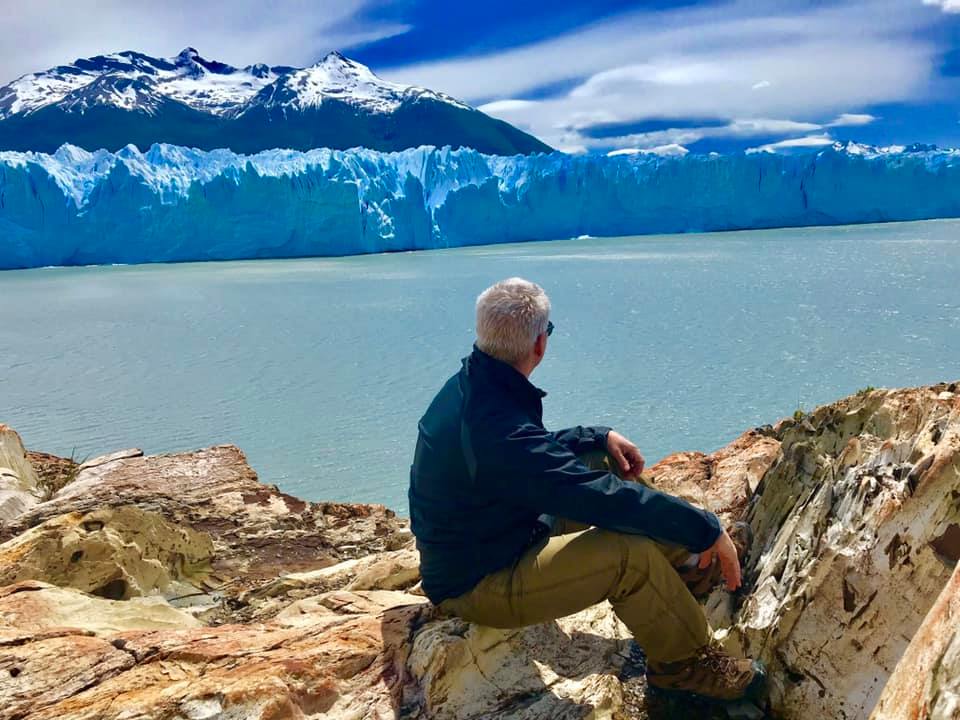
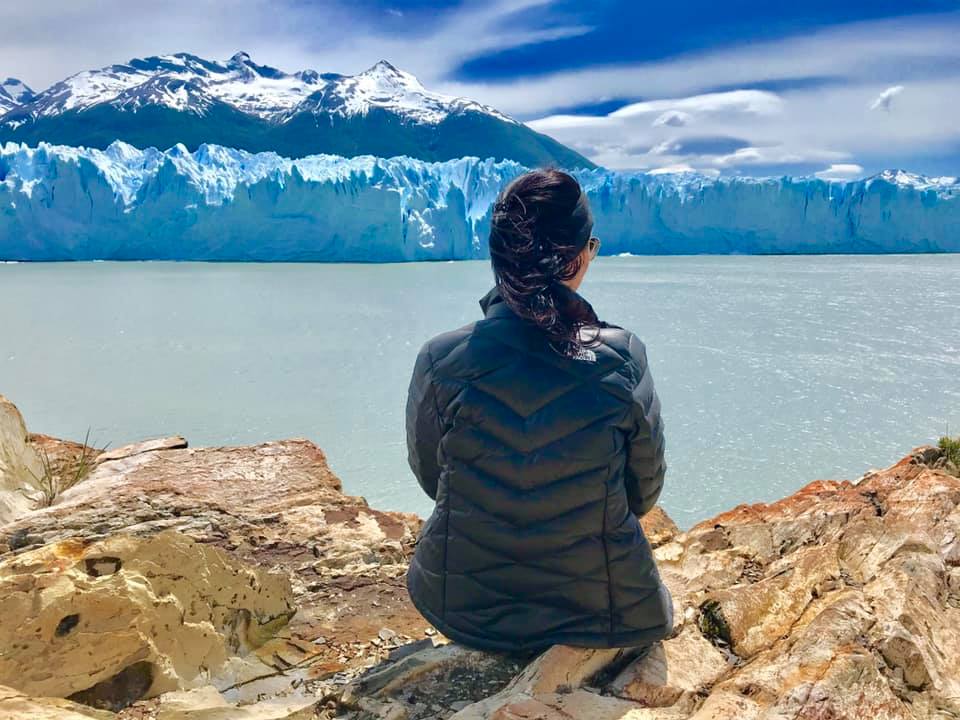
After lunch, we boarded the boat and then were transported to the boardwalk to see the glacier that we just trekked!
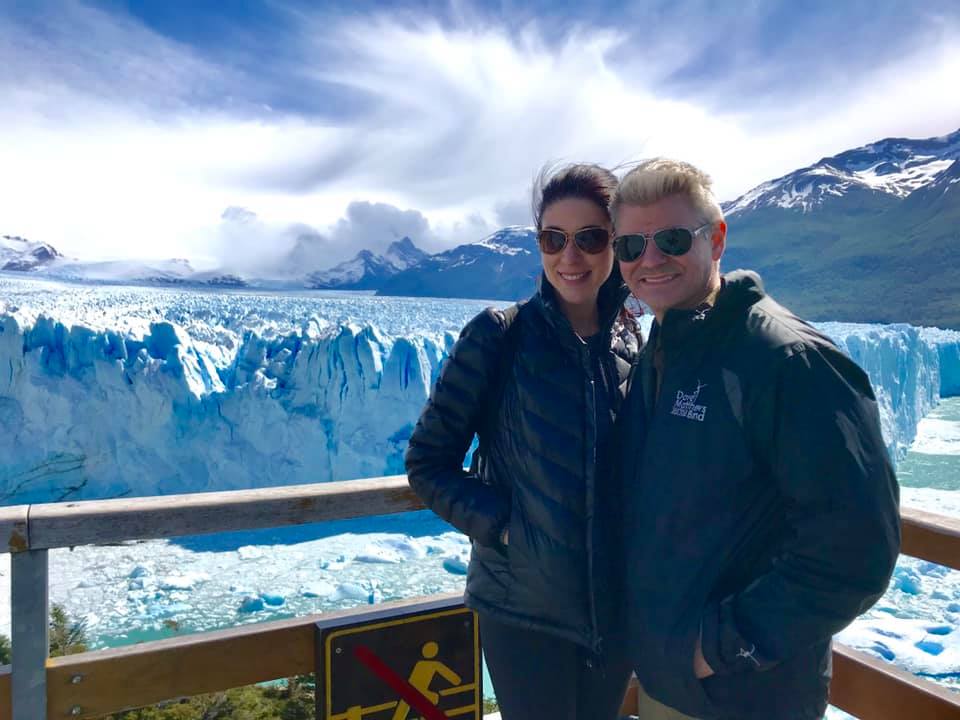
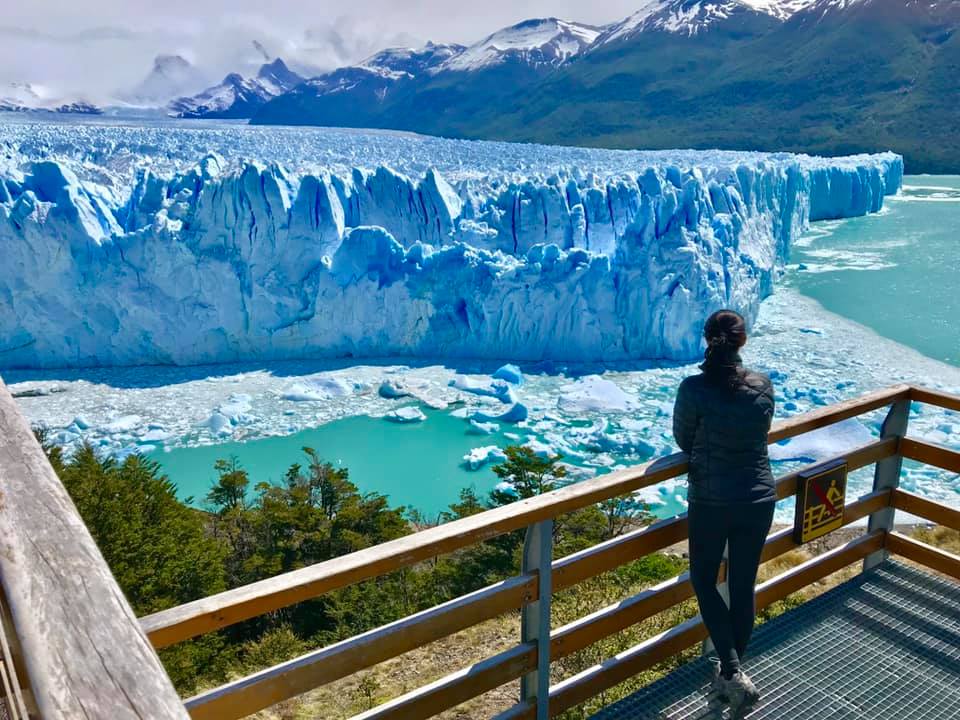
This was one of our favorite experiences in Patagonia. I highly recommend the trek!
The Wardrobe
The weather in Patagonia is notoriously unpredictable. They say that you can experience all four seasons in one day. We certainly found that to be the case in Chile, but not so much on the Argentinian side.
We went during their summer months, which are our winter months in the U.S. Even though it was summer, it was still cold. Your best bet is to layer. Long sleeve shirts, sweaters, and wind and water proof jackets are a must.
If you are doing the mini trek, you will want warm leggings or hiking pants, thick hiking socks, sturdy hiking boots (not sneakers), and a thick pair of waterproof gloves. Ear warmers, beanies, sunglasses, and sunscreen are also a must.
If you are not hiking, a comfortable pair of sneakers is fine as the boardwalk is pretty flat and in great condition. This list is sufficient for Perito Moreno. If you are moving on to Chile, you will need some additional items, which I will detail in my next post.
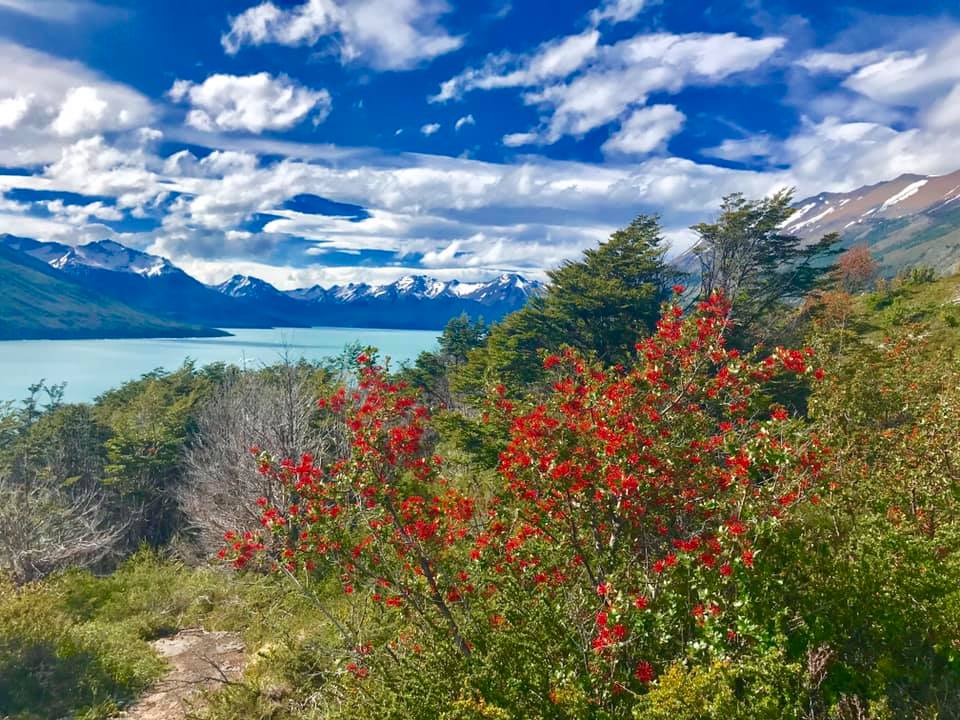
I hope this post has inspired you to put Perito Moreno on your bucket list. In my next post, we will move on to the Chilean side of Patagonia.
